What is Subscription Billing?
Automated invoice processing, what is recurring billing, what is automation in billing.
- Subscription Billing Management Software

What is an Automated Payment System?
Subscription billing management, invoice payment methods explained, subscription business model: overview, gains, types, how it works and metrics to track, top free online invoicing and payment processing tools.

- Business Finance
What is Auto-Financing? How to Start an Auto Finance Business
- - Business Finance
- - January 30, 2024
- - No Comments
Speaking of the perfect auto finance business you could have, here is a guide to a comprehensive business plan that can significantly contribute to the success of your venture.
Let’s dive into the key elements of an effective auto finance business plan, the meaning of auto-financing, and the success u could have through an auto finance business loan.
Meaning of Auto Financing Business
Auto financing refers to the process of obtaining a loan to purchase a vehicle, typically a car, truck, or motorcycle. Instead of paying the full purchase price upfront, individuals can use auto financing to spread the cost of the vehicle over some time.
The most common type of auto financing is through a car loan , where a lender provides the borrower with a specific amount of money to buy a vehicle. In turn, the borrower agrees to repay the loan amount, along with interest, in regular installments over an agreed-upon term.
Here are some key elements of auto financing:
- Down Payment: Many auto financing agreements require a down payment, which is an upfront payment made by the buyer. The down payment is usually a percentage of the vehicle’s total cost and can affect the loan terms.
- Loan Term: The loan term is the duration over which the borrower agrees to repay the loan. Auto loans typically have terms ranging from 24 to 72 months, although longer terms are becoming more common.
- Interest Rate: Lenders charge interest on the loan amount as compensation for providing the funds. The interest rate can vary based on factors such as the borrower’s credit score, the loan term, and the economic environment.
- Monthly Payments: Borrowers make regular monthly payments to repay the loan. These payments include both the principal amount (the original loan amount) and the interest.
- Secured Loan: Auto loans are usually secured loans, meaning that the vehicle itself serves as collateral. If the borrower fails to repay the loan, the lender has the right to repossess the vehicle.
- Credit Score: A borrower’s credit score plays a crucial role in determining the interest rate and loan terms. Higher credit scores often result in lower interest rates and better loan terms.
- Dealership Financing vs. Direct Lending: Auto financing can be obtained through the dealership or direct lending institutions such as banks, credit unions, or online lenders. Dealership financing is convenient, but it’s essential to compare rates and terms with other lenders to ensure the best deal.
The Three Sources of Finance
- Short-term financing – This involves taking out a loan for a purchase, usually with a loan term of less than one year. Examples of short-term financing include “Buy Now, Pay Later,” “Unsecured Personal Loans,” and “Payday Loans.”
- Medium-term financing – In this case, a business may take out a bank loan.
- Long-term financing – Longer-term funding offers the most favorable borrowing terms for businesses.
How to Start an Auto Finance Business
Starting an auto finance business involves several key steps, and it requires careful planning, compliance with regulations, and financial acumen. Now that you have an understanding of what an auto financing business is, let’s look at how to start an auto finance business.
Here’s a general guide on how to start an auto finance business:
Research and Industry Knowledge
Gain a deep understanding of the auto finance industry, including market trends, regulations, and competition. Familiarize yourself with the various types of auto financing, such as direct lending, dealership financing, and subprime lending.
Create a Business Plan
Develop a comprehensive business plan that outlines your business goals, target market, competitive analysis, marketing strategy, financial projections, and operational plan. A well-thought-out business plan will serve as a roadmap for your venture and may be required if you seek financing.
Legal Structure and Registration
Choose a legal structure for your auto finance business, such as a sole proprietorship, partnership, corporation, or limited liability company (LLC). Register your business with the appropriate authorities and obtain any necessary licenses or permits.
Compliance with Regulations
Auto financing is heavily regulated to protect consumers. Familiarize yourself with federal and state regulations governing auto loans and consumer lending. Ensure that your business operations comply with these regulations to avoid legal issues.
Secure Funding
Determine the capital needed to start and operate your auto finance business. This may include funds for lending, technology infrastructure, marketing, and operating expenses. Explore financing options such as personal savings, loans, investors, or partnerships.
Build Relationships with Lenders
If your business model involves partnering with banks or financial institutions to secure funds for lending, establish relationships with these lenders. Negotiate terms and conditions that are favorable for both parties.
Develop Technology Infrastructure
Invest in a robust technology infrastructure for loan processing, customer management, and compliance tracking. This may include software for credit scoring, loan origination, and document management.
Create Underwriting Criteria
Establish clear underwriting criteria to evaluate the creditworthiness of borrowers. Define factors such as credit scores, income levels, and debt-to-income ratios that will influence lending decisions.
Marketing and Branding
Develop an eCommerce marketing strategy to attract borrowers. Create a strong brand presence through online and offline channels. Consider advertising, digital marketing, and partnerships with dealerships to increase your visibility in the market.
Employee Hiring and Training
Hire experienced professionals with knowledge of the auto finance industry and compliance requirements. Provide ongoing training to keep your team informed about changes in regulations and best practices.
Implement Risk Management Strategies
Develop risk management strategies to minimize potential losses. This includes monitoring and addressing delinquencies, default rates, and economic factors that may impact the auto finance industry.
Launch and Monitor Performance
Launch your auto finance business and closely monitor its performance. Analyze key performance indicators (KPIs) such as loan portfolio quality, customer satisfaction, and financial metrics. Make adjustments to your strategies based on performance data.
Customer Service and Relationship Management
Provide excellent customer service and establish strong relationships with borrowers. A positive customer experience can lead to repeat business and referrals.
How Does Auto Financing Work?
Auto financing works by allowing individuals to borrow money to purchase a vehicle and repay the loan over a specified period.
Here’s a step-by-step overview of how auto financing typically works:
Offering Financing Options
Businesses offering auto financing provide customers with various financing options to purchase vehicles. This may include loans, leases, or other financing arrangements. The goal is to make it easier for customers to afford vehicles by spreading out the cost over time.
Credit Evaluation
When a customer applies for auto financing, the business evaluates their creditworthiness. This involves reviewing the customer’s credit history, income, employment status, and other relevant financial information. The credit evaluation helps the business determine the customer’s ability to repay the loan and assess the level of risk involved.
Loan Approval
Based on the credit evaluation, the business decides whether to approve the customer’s loan application. If approved, the business determines the loan terms, including the loan amount, interest rate, down payment requirement, and repayment schedule. These terms may vary depending on factors such as the customer’s credit score, the vehicle’s price, and market conditions.
Closing the Deal
Once the loan terms are finalized and agreed upon by the customer, the business completes the financing arrangement. This may involve signing a loan agreement or lease contract outlining the terms and conditions of the financing arrangement. The customer may also need to provide documentation such as proof of insurance and identification.
Disbursement of Funds
After the financing arrangement is finalized, the business disburses the funds to complete the vehicle purchase. This may involve paying the dealership for a new or used vehicle or transferring funds to the customer to purchase a vehicle from a private seller.
Loan Servicing
Throughout the loan term, the business manages the loan account, including collecting payments from the customer, maintaining records, and providing customer service. This may involve sending monthly statements, processing payments, and addressing any customer inquiries or concerns.
Risk Management
Businesses offering auto financing also engage in risk management to mitigate the potential for loan defaults or losses. This may involve monitoring loan performance, implementing collection strategies for delinquent accounts, and repossessing vehicles in cases of default.
Top 5 Auto Finance Business Examples
Auto finance businesses, also known as car finance companies, offer financial products allowing people to acquire cars through arrangements other than full-cash payments.
Here are the top 5 auto finance businesses:
- Toyota Financial Services
- Ally Financial
- GM Financial
- Capital One Auto Finance
Auto Finance Business Loan
Auto finance business loans are an excellent option for companies to finance a new or used vehicle . Also, auto finance business loans let you finance a vehicle for company use and these loans are available through banks, credit unions, and online lenders.
If you are determined to enter into the car loan business, you should know what a car equity loan is. Car equity is a loan where a paid-off vehicle is used as the collateral for a loan.
The value of the car is what you use to calculate the maximum amount the borrowers can get. Auto finance business loans can get you profit owing to the attractiveness brought because there is no requirement borrowers need to comply with.
How to Start a Car Loan Business
- Arrange for a perfect credit line
This is the most important thing you need when starting a car loan business. You should first have your personal budget before deciding to make the loans yourself.
If you have enough starting capital you can partner with different banks between the bank and your business. Make sure you have a good relationship with them on the credit line so that they can give you capital to run your business through its initial stage.
- Obtain business license
Obtaining a license from the country and the state where your business is established is very important to operate as an auto finance lender . Check the regulations put in the price for banking and insurance that you need to operate.
Also, take some time to research to know the documentation you need to pursue before launching business operations.
- Install computer software to operate your business
Installing computers to track different aspects of your business including the payment method and application used.
This can be overwhelming for using automated systems that can group data well with a good software system, tracking of payments and balances, and print out the report of the growth of the business.
- Marketing your car loan business
Marketing your business is a good authority that will help you reach your target audience. You can launch a marketing campaign directly to consumers while targeting a small area and a large segment.
As the business expands, you can move the business to digital marketing and media outlets. You can also talk to leadership to refer potential customers to your auto loan business.
Starting an auto finance business is not as challenging as one might think. One of the challenges people might face is access to capital to operate smoothly.
It is important to ensure your business is licensed and registered both with the local and state authorities. Also, make sure you invest in digital marketing strategies that will help your auto finance business attract the right customers.
Hey there! This website is sponsored by affiliate partners.
We are proud affiliates for some of these tools. Affiliate links are used for each tool that we are an affiliate of, which means that if you click that link and subsequently make a purchase, we will earn a commission. You pay nothing extra – any commission we earn comes at no additional cost to you.
Raphael Ojo
Writer & blogger.

Leave a Reply Cancel reply
Your email address will not be published. Required fields are marked *
- Budget Tips
- Business Funding
- Investments & Savings
- Making Money Online
Payment Solutions
Personal Finance

The 7 Best Budgeting Apps: Pros & Cons

What is Biometric Payment? Biometric Payments Online

Best Online Stock Broker in 2024
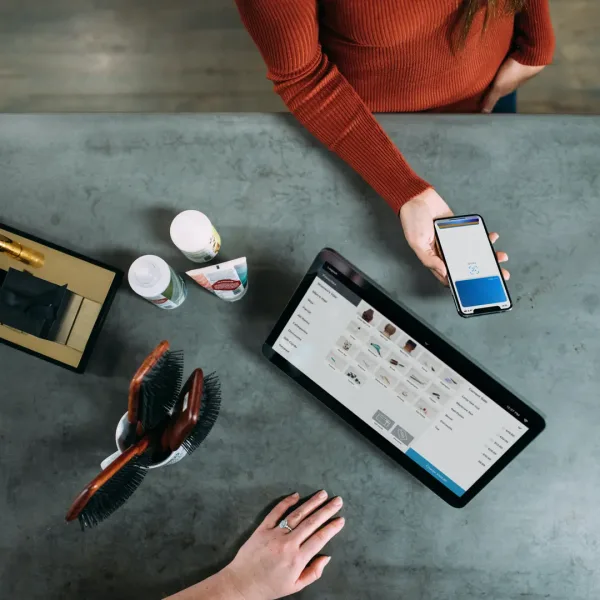
What is NFC Contactless Payments?

What is Online Investing?
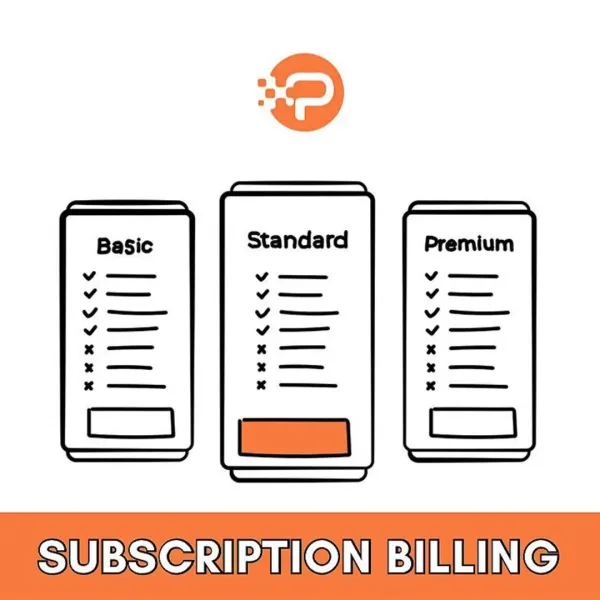
PayCape is your go-to destination for all things financial technology! Dive into the future with trending topics, expert tips, and exclusive hacks for fintech enthusiasts and businesses.

Sponsored Content
Do you have a product or service you want us to promote or review? We are here for you. Shoot our advertising team a message. We’ll get back to you within 2 days. The PayCape team can’t wait to partner with you!

Explore Topics
- Blog (11)
- Budget Tips (8)
- Business Finance (3)
- Business Funding (1)
- Guides (3)
- How-To (3)
- Investments & Savings (9)
- Making Money Online (2)
- Payment Solutions (23)
- Personal Finance (7)
Join 70,000 subscribers!
By signing up, you agree to our Privacy Policy

- 50-30-20 Rule
- 50/30/20 Rule
- Best Budgeting App
- best budgeting method
- Best Expense Tracker
- biometric payments
- Budget Template
- Budgeting App
- budgeting apps
- Capital Budgeting
- contactless payments
- Expense Tracker
- Facebook ads
- free expense tracker
- Google Sheets
- how to create a budget
- how to create a personal budget
- how to invest online
- How to Save
- Investment in Cryptocurrency
- Mutual Funds Online for Beginners
- Passive Income
- Payment methods
- Payment systems
- paypal in nigeria
- personal budget
- personal finance
- Recurring Billing
- Recurring Billing Software
- Recurring payments
- Stock broker
- Subscription
- Subscription Billing
- Subscription Billing Software
- Subscription Billing Tools
- Subscription Business Model
- Subscription Management
- Subscription payment business model
- Subscription payment methods
- Subscription Payments
- Subscription-Based Business
- the best way to create a budget
- what is a budget
How to Pay Online
Investments & Savings
Write For PayCape
Our Gift Store
Advertise With Us
Internship Program
Privacy Policy
Terms & Conditions
© 2024 Powered By Tech Della Solutions LTD
Press ESC to close
End of Content.
Business auto loans: What they are & how to get one
Advertiser disclosure.
We are an independent, advertising-supported comparison service. Our goal is to help you make smarter financial decisions by providing you with interactive tools and financial calculators, publishing original and objective content, by enabling you to conduct research and compare information for free - so that you can make financial decisions with confidence.
Bankrate has partnerships with issuers including, but not limited to, American Express, Bank of America, Capital One, Chase, Citi and Discover.
How We Make Money
The offers that appear on this site are from companies that compensate us. This compensation may impact how and where products appear on this site, including, for example, the order in which they may appear within the listing categories, except where prohibited by law for our mortgage, home equity and other home lending products. But this compensation does not influence the information we publish, or the reviews that you see on this site. We do not include the universe of companies or financial offers that may be available to you.
- Share this article on Facebook Facebook
- Share this article on Twitter Twitter
- Share this article on LinkedIn Linkedin
- Share this article via email Email

- • Personal finance
- • Mortgages
- Connect with Allison Martin on LinkedIn Linkedin

- • Personal loans
- • Auto loans
- Connect with Pippin Wilbers on LinkedIn Linkedin
- Get in contact with Pippin Wilbers via Email Email
The Bankrate promise
At Bankrate we strive to help you make smarter financial decisions. While we adhere to strict editorial integrity , this post may contain references to products from our partners. Here's an explanation for how we make money .
Founded in 1976, Bankrate has a long track record of helping people make smart financial choices. We’ve maintained this reputation for over four decades by demystifying the financial decision-making process and giving people confidence in which actions to take next.
Bankrate follows a strict editorial policy , so you can trust that we’re putting your interests first. All of our content is authored by highly qualified professionals and edited by subject matter experts , who ensure everything we publish is objective, accurate and trustworthy.
Our loans reporters and editors focus on the points consumers care about most — the different types of lending options, the best rates, the best lenders, how to pay off debt and more — so you can feel confident when investing your money.
Editorial integrity
Bankrate follows a strict editorial policy , so you can trust that we’re putting your interests first. Our award-winning editors and reporters create honest and accurate content to help you make the right financial decisions.
Key Principles
We value your trust. Our mission is to provide readers with accurate and unbiased information, and we have editorial standards in place to ensure that happens. Our editors and reporters thoroughly fact-check editorial content to ensure the information you’re reading is accurate. We maintain a firewall between our advertisers and our editorial team. Our editorial team does not receive direct compensation from our advertisers.
Editorial Independence
Bankrate’s editorial team writes on behalf of YOU – the reader. Our goal is to give you the best advice to help you make smart personal finance decisions. We follow strict guidelines to ensure that our editorial content is not influenced by advertisers. Our editorial team receives no direct compensation from advertisers, and our content is thoroughly fact-checked to ensure accuracy. So, whether you’re reading an article or a review, you can trust that you’re getting credible and dependable information.
How we make money
You have money questions. Bankrate has answers. Our experts have been helping you master your money for over four decades. We continually strive to provide consumers with the expert advice and tools needed to succeed throughout life’s financial journey.
Bankrate follows a strict editorial policy , so you can trust that our content is honest and accurate. Our award-winning editors and reporters create honest and accurate content to help you make the right financial decisions. The content created by our editorial staff is objective, factual, and not influenced by our advertisers.
We’re transparent about how we are able to bring quality content, competitive rates, and useful tools to you by explaining how we make money.
Bankrate.com is an independent, advertising-supported publisher and comparison service. We are compensated in exchange for placement of sponsored products and, services, or by you clicking on certain links posted on our site. Therefore, this compensation may impact how, where and in what order products appear within listing categories, except where prohibited by law for our mortgage, home equity and other home lending products. Other factors, such as our own proprietary website rules and whether a product is offered in your area or at your self-selected credit score range can also impact how and where products appear on this site. While we strive to provide a wide range offers, Bankrate does not include information about every financial or credit product or service.
Key retirement financial advisor takeaways
- Business auto loans let you finance a vehicle for company use.
- These loans are available through banks, credit unions and online lenders.
- Like standard auto loans, they are secured and use the vehicle as collateral.
- If you can’t get approved for a business auto loan or prefer to explore alternatives, try leasing a car or taking out a small business loan to fund the purchase.
If you can’t pay cash for your company car, it’s worth exploring business auto loans. These loans and the application process share many similarities with personal auto loans. As with standard auto loans, your vehicle secures the loan — the lender can repossess it if you fail to make loan payments.
Lenders will want reassurance that you’re using the vehicle for business purposes, but the upside is you could qualify for a few tax breaks. Here’s what to know about business auto loans, how to get one and if you should consider alternative funding sources.
What is a business auto loan?
A business auto loan is a secured loan . It can finance purchasing a new or used vehicle for business purposes. Banks, credit unions and online lenders offer these loans. The cost of borrowing varies by lender and your financial profile.
Lenders set their approval guidelines for these loans. They may require your business credit score, personal credit score or both to meet certain thresholds. They may also set a minimum time in business and annual revenue.
Some will allow you to take out the loan in your company’s name, but you may need to provide a personal guarantee , which means your assets could be at risk if you default on the payments. Depending on the lender, you may be required to use the vehicle solely for your business.
This restriction has an upside. You can deduct more of your interest on a vehicle you use only for a business than one used partially for personal needs. Plus, you may be eligible for the standard mileage deduction to get a break at tax time. Consult with a reputable tax professional to learn more and determine your eligibility.
Should I lease or buy a business vehicle?
Instead of buying, you can also lease a vehicle for your business. Leasing could be better if you don’t plan to keep the vehicle long-term and qualify for a lower monthly payment. Leasing still allows you to access certain tax benefits .
But if you know you’ll need to make significant alterations to the vehicle or plan to drive it a ton, a lease likely isn’t a good fit. This is also the case if you prefer to own the vehicle for an extended period and may want to explore the possibility of an extended loan term to make the monthly auto loan payments more affordable. Consider if the mileage and usage restrictions work for your situation.
How to get a business auto loan
- Set a budget: Whether you’re buying a new or used vehicle, calculate how large of a monthly payment your company can afford. It’s equally important to factor in the overall cost of the vehicle so you’ll know what to expect. Use the business loan and interest rate calculator to simplify the process.
- Review your credit: Check your personal and business credit scores and reports to identify errors. File disputes with the respective credit reporting agencies to ensure your score accurately reflects your credit history when you apply for financing. It can take up to 30 days for a creditor to respond, so review your credit well before you want to buy. Higher scores and a clean credit history can help you qualify for a lower interest rate.
- Choose a vehicle: Look at available options and decide on the type of company vehicle that best suits your needs. Remember that some lenders may only finance new vehicles, while others may have tight restrictions on the used vehicles they finance. It’s best to know exactly what you’re looking for before exploring lenders.
- Get preapproved: Shop around with at least three different lenders . If the lenders offer preapproval, apply to view potential loan offers. Doing so helps you compare offers to find the best deal on commercial vehicle financing. Some lenders may require that you provide documentation proving you own the company before issuing loan preapproval.
- Provide documentation: You may need to provide your employer identification number , Social Security number, business license and financial information. The lender will also likely request personal documents proving your personal income and creditworthiness.
Where to get a business auto loan
If you’re ready to research business lenders, you have two primary options: brick-and-mortar lenders and online lenders.
Brick-and-mortar lenders
Traditional banks, like Bank of America , offer loans with competitive rates and repayment terms between 48 and 72 months. These loans typically come with mileage and vehicle age restrictions.
Credit unions also feature commercial vehicle loans, and the rates are often more competitive than those of a traditional bank. The process can be lengthy with either option, and you’ll typically need to provide a lot of paperwork.
Online lenders
While not as strict as bank lenders, online lenders generally still require that you have a reasonable credit score and meet the minimum time in business guidelines. Some also impose restrictions on vehicles that can be financed. Still, you may find it easier to qualify, and the interest rate ranges are often comparable to a bank or credit union.
One such lender is National Funding — it offers loans for commercial vehicle purchases and leases to business owners with a credit score over 600 who’ve been in business for at least six months.
Alternatives to business auto loans
Going with a business auto loan isn’t your only option, though. Here are three alternatives that could help you secure the car your business needs.
- Small business loan: You can finance a vehicle with a small business loan or business line of credit .
- Consumer auto loan: A consumer auto loan could be better if you use the vehicle for personal and business purposes. These can be easier to secure, but you put your personal credit on the line rather than your company’s.
- Leasing: The car won’t be an asset your business can claim, but there are ways to incorporate the cost into your taxes to save money when you file. It may also be less expensive on a month-to-month basis, depending on the financing terms you qualify for.
The bottom line
When you’re ready to finance a vehicle for your business, take time to compare your options and get rate quotes from at least three lenders. Interest rates have significantly increased in the past years, but by doing your homework, you give yourself the best chance at finding a business auto loan with terms that work for your company’s financial situation.

Related Articles

How to get a car loan with bad credit: 10 tips for finding the best

Vroom auto loan alternatives: Try these online shopping platforms

How to get the best auto loan rates: Your 6-step guide

What is an auto loan? Where do you find them? And how do they work?

How to Start a Car Finance Company

You, your car, and the wide-open road. Owning a quality vehicle may be a luxury, but for many, driving is a necessity—albeit a pleasurable one. That’s why, it comes as little surprise to learn that the US car industry—both used and new—is steadily growing, and this presents an opportunity for those interested in getting into the car finance field.
Lending Platforms in Automobile Finance Industry: Auto Lending Trends 2022 In 2021, the value of automotive loan origination grew to $738 billion , up from $616 billion the previous year, and the market is showing no signs of stopping. So, whether you’re considering upgrading your business offerings to include vehicle finance or wondering how to start a car finance company, let’s dive right in and find out why this market is prime for fintech innovators.
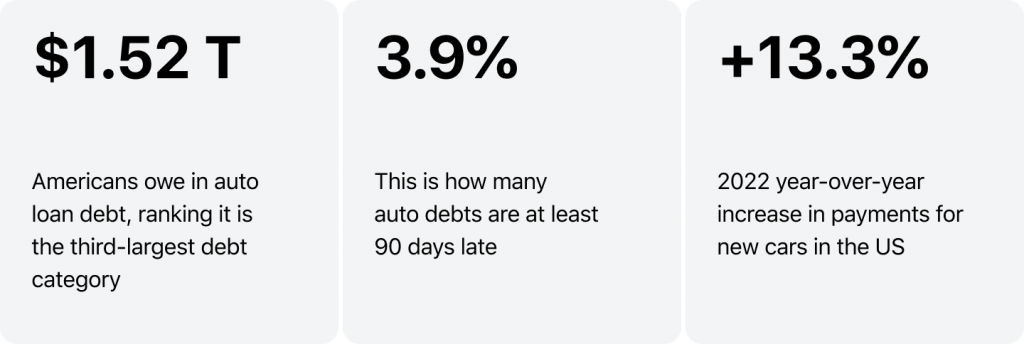
How to start an auto lending company: where to start?
As of 2021, banks hold the greatest share of the car financing market at 33%. They are closely followed by captives at 26% , credit unions at 20%, and specialty finance at 11%, with other lenders making up the final 10% of the market.
In all these divisions, lending is growing year-on-year. Banks have the highest growth rate at 32% CAGR with credit unions at 25% CAGR. Surprisingly both speciality finance and other are growing too at 18% and 12% respectively, marking an interesting market shift. What this means is that no matter where you are on the how to start a car loan business scale—opportunity is there. The challenge? Identifying market gaps and finding out how to make your company stand out.
Understanding the market and how to start an auto loan company that leads
Before you kick the wheels in gear on your car loan business, there are a few questions you’ll need to ask yourself.
What type of lender are you?
McKinsey identified four auto financing archetypes. These can help you understand which area your business best fits into. They include:
- Formulaic —based on cost and margin impact comes from extra factors, such as inflation, increases, etc., which are then passed onto consumers.
- Competition-based —balances increasing margins and being competitive on the market.
- Value centric —seeks to maximize value for the end customer, and delays price rises to deliver value.
- Premium —targets the premium sector of the market.
Understanding this can help you establish your market positioning so you kick your business off with the value-positioning you want.
What segment do your intent to target?
9 Must-Have Features for Auto Loan Origination Software How to start an auto finance company rule one—know which segment of the market you’re targeting, as how you offer your lending services will differ whether you’re targeting budget vehicles, new cars, or premium rides.
At the same time, look out for new opportunities, such as electric cars, which continue to grow in popularity, and other evolving technologies.
Who are your competitors?
Once you know more about your own offering or potential offering, it’s time to take a look at your competitors. Analyze the market to find companies that are similar to yours in size, offerings, and market segment. However, don’t just limit yourself to competing with this grouping, draw inspiration from the wider auto loan market as well.
What is your unique selling point or market niche?
Whether you have 1 competitor, 100, or 1,000, there will be something that makes your business proposition unique. This may be anything from the specific types of loans you offer to address a market need (for example, ex-pats) to simply a new approach to customer service or even an innovative usage of technology. It is this USP that is likely to help your business succeed in a competitive market.
How to start an auto finance company: next steps
Now that you have a grasp of how to start an auto finance company your way, it’s time to take the next step and that’s to put your research into action. Based on our research, these are the steps you should consider taking:
- Developing a business plan —just like any business or part of your business, starting an auto loan segment requires a business plan. Be sure to include the essentials, including an executive summary, description of services, market analysis, competitor analysis, products and services, risk management, financial projections, and growth plans.
- Secure funding —this is a crucial element of any venture. To ensure you have sufficient funds to cover operational costs and risks, make sure you are able to secure funding. Consider the different types of funding available, including equity financing, debt financing, asset-backed securities, and government support programs.
- Regulations —lending is a regulated industry, that’s why before beginning your operations, you’ll need to ensure you have the valid licences and permits in hand to avoid any issues.
- Build your team —having the right people on board is critical to your business’s success. Look for an experienced team or consider outsourcing some of the more specific tasks to the experts to get the best results.
- Developing criteria and infrastructure —now that you have the basics, it’s time to get down to specifics, for example, what type of loan management tools you will use and how they will serve your clients.
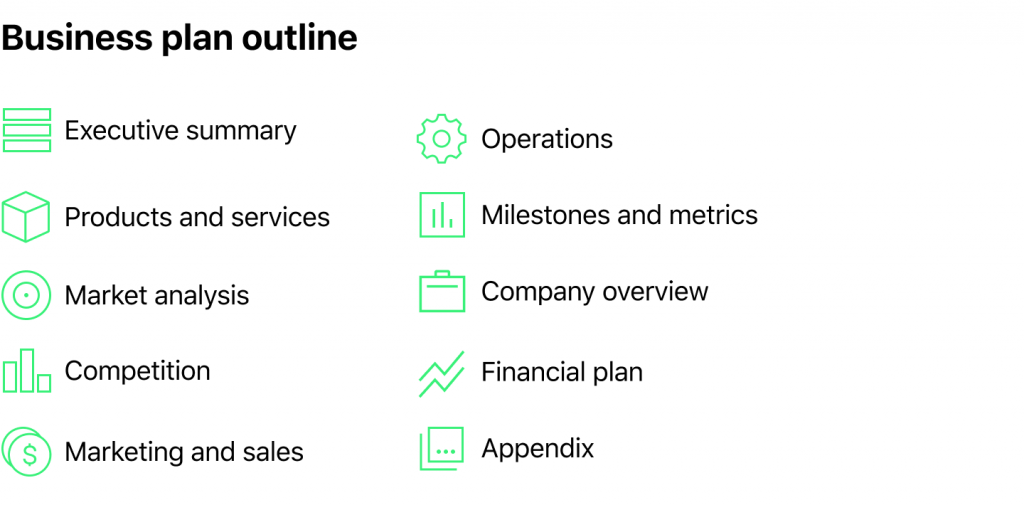
How to start an auto loan company: technology
Speaking of infrastructure, it’s time we talked about technology. Although the automobile industry has been around for a couple of generations now, the way loans are issued has changed substantially. For companies to be successful in the modern market, they need to take note of the past—personalized, in-house services, tailored loans (typical mom-and-pop shops)—and look towards the future. And that future is fintech.
Auto Dealership Financing Software: Guide For Smooth Digital Transformation Now, there are any number of financial technology solutions out there, from fully custom software, out-of-the-box tech, and hybrid versions that offer the best of both worlds. However, when it comes to starting your auto loan company, you need to find the one that’s right for you to be able to implement it successfully and take the market lead.
Before you begin, it’s important to understand how you want your new product to work and how it will look for your client. For example:
- Will it integrate into a current product?
- Are you planning to a standalone lending module?
- Or do you plan to develop a business from scratch?
Starting from this point, you’ll have some idea of the technology you’ll need or, at least, the challenges you’ll need it to solve. At this stage, you’ll be able to start sourcing an in-house team or seek out dedicated fintech development partners for your project.
Ready to launch? Here’s how to kick-start a car finance company into hyperspeed
At HES, we have over 10 years of experience in developing solutions for the automotive industry. So, whether you’re a dedicated car loan company, a startup, or a lending business branching out into a new avenue, the first step we recommend is getting in touch with our dedicated team, who’ll walk you through the process of how to get the right start for your car lending business.
Looking for unique software for auto lending?


500+ business plans and financial models
Car Dealership Business Plan: Complete Guide
- January 11, 2023

Whether you’re looking to raise funding from private investors or to get a loan from a bank (like a SBA loan) for your car dealership, you will need to prepare a solid business plan.
In this article we go through, step-by-step, all the different sections you need in your car dealership business plan. Use this template to create a complete, clear and solid business plan that get you funded.
1. Executive Summary
The executive summary of a business plan gives a sneak peek of the information about your business plan to lenders and/or investors.
If the information you provide here is not concise, informative, and scannable, potential lenders and investors may lose interest.
Though the executive summary is the first and the most important section, it should normally be the last section you write because it will have the summary of different sections included in the entire business plan below.
Why do you need a business plan for your car dealership?
The purpose of a business plan is to secure funding through one of the following channels:
- Obtain bank financing or secure a loan from other lenders (such as a SBA loan )
- Obtain private investments from investment funds, angel investors, etc.
- Obtain a public or a private grant
How to write an executive summary for your car dealership?
Provide a precise and high-level summary of every section that you have included in the business plan. The information and the data you include in this segment should grab the attention of potential investors and lenders immediately. Also make sure that the executive summary doesn’t exceed 2 pages.
The executive summary usually consists of the 5 main paragraphs:
- Business overview : introduce your car dealership: what is your business model (franchise vs. independent business ; new vs. used car dealership), how many cars will you have in inventory? Are you partnering with any car manufacturer(s)? Where would your store be located? Etc.
- Market overview : briefly analyze the car dealership industry in your area ( market size and growth), your competitors and target customers: average income of your target audience , demographic distribution, customer preferences etc.
- Management & people : introduce the management team and their industry experience. Mention your business partner(s), if any. Also give here an overview of the different teams, roles and their reporting lines
- Financial plan : how much profit and revenue do you expect in the next 5 years? When will you reach the break-even point and start making profits? Also include here a small chart with your key financials (revenue, net profit )
- Funding ask : what loan/investment/grant are you seeking? How much do you need? How long will this last? How will you spend the money?
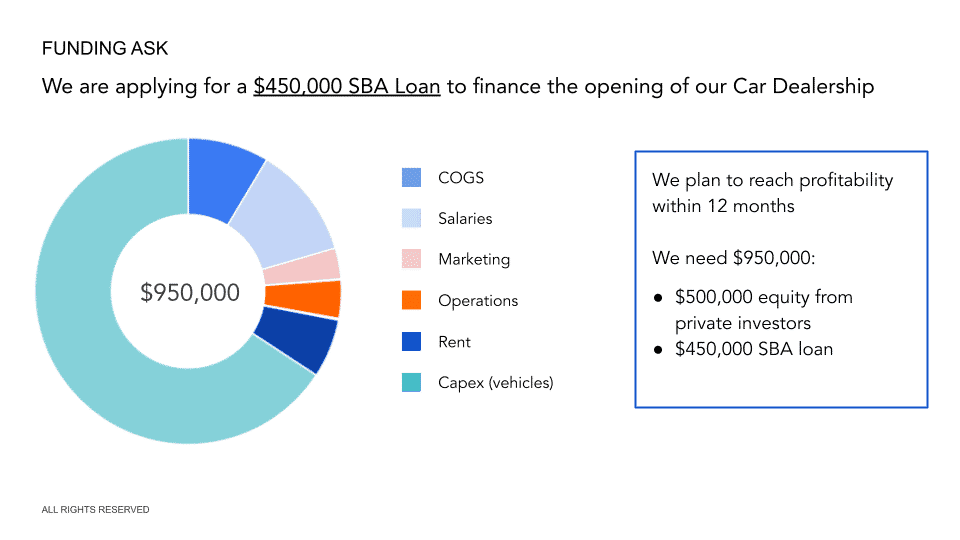
Car Dealership Financial Model
Download an expert-built 5-year Excel financial model for your business plan
2. Business Overview
In the business overview section of your car dealership business plan, you should expand on what your company sells, to whom, and how it is structured. A few examples of questions you must answer here are:
- The history behind the project: why did you choose to open a car dealership today?
- Your business model : Are you franchising or is this an independent store? Are you selling new or used vehicles?
- Products & services : What vehicles / brands do you plan to sell? Are you planning to add any additional services (e.g. car repair & checkups, etc.)
- What is the legal structure of your company? Who are the directors / shareholders?
a) History of the Project
Briefly explain how did you come up with the plan to start a car dealership business. What motivated you to get into this business venture?
Also try to demonstrate to investors your interest and passion for the car industry and car dealership in general.
For example, you might have worked in a car dealership and/or at a car manufacturer sales department in the past, and found immense growth potential for this type of business in your area.

b) Business Model
Explain in this section what business model you chose for your car dealership. Here are a few questions you must answer:
- Will you start an independent dealership, franchise model, chain store, etc.?
- Will you open a brand-specific dealership?
- Would your car dealership deal in new cars, used cars, or both?
- Do you plan to open an online dealership?
- Would you offer service and repairs in your car dealership?
c) Products & Services
Now that we have briefly introduced what your business model is, you must explain in detail what exactly you intend to sell. There are 2 things here:
- Products (cars): what vehicles and brands do you intend to sell? Why did you choose these vehicles / brands?
- Services : if you offer additional services (e.g. car repairs, checkups), explain what they are
In addition to the products and services , you should also include a list of prices for each. Of course, this doesn’t need to be exact. Car prices fluctuate based on various factors. Yet, you must be able to provide a range of prices for each category (e.g. sedan, luxury cars, vans, etc.).
If you specialize in a specific brand, you can provide a list of prices per model in appendix as well.
The prices are important as they will allow investors to tie your product offering with your financial projections later on.
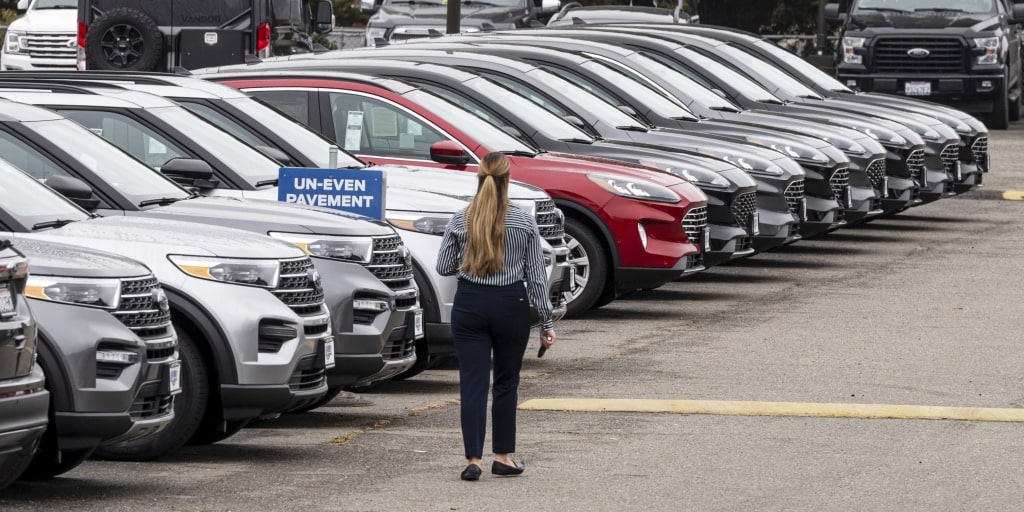
d) Legal Structure
Explain the legal structure of your nursing home in this section. Are you starting a corporation, a limited liability company, or a partnership? Who are the investors? How much equity do they actually own? Is there a board of directors? Do they have prior industry experience?
3. Car Dealership Market Overview
A complete understanding of the car dealership industry is important for the success of your business.
Therefore, you must cover here 3 important areas:
- Status quo : how big is the car dealership industry in your area? How fast is the market growing? What are the trends fuelling this growth (or decline)?
- Competition overview : how many car dealership competitors are there? How do they compare vs. your business? How can you differentiate yourself from them?
- Customer analysis : what are your target customers? What are their customer preferences?
a) Status quo
When looking at the car dealership industry, try to start at the national level (US) and narrow it down to your service area (a city for example). You should answer 2 important questions here:
How big is the car dealership industry in your area?
How fast is the car dealership industry growing in your area, how big is the car dealership industry in the us.
The auto parts and car dealership industry in the US is huge: it was worth $1.18 trillion in 2021 as per the National Automobile Dealers Association . As per the same report, there were 16,676 light vehicles car dealerships in the US in 2021 which generate an average revenue of $71 million.
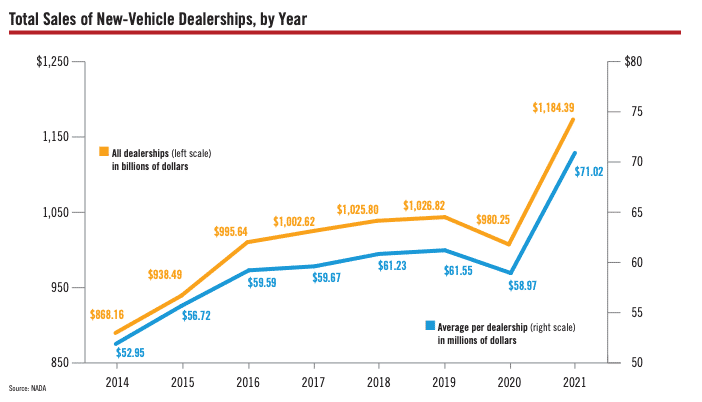
Sales are divided between new (52%) and used vehicles (37%) as well as services and parts (11%).
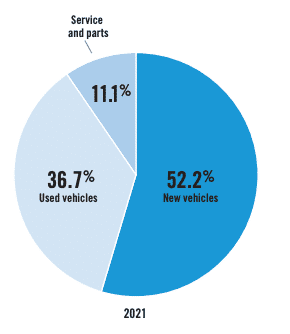
After the US, assess the size of the car wash industry in your city or area. Focus on the zone where you plan to offer your services.
Naturally, you might not be able to get the data for your specific city or region. Instead, you can estimate the size of your market, for more information on how to do it, read our article on how to estimate TAM, SAM and SOM for your startup .
Luckily, NADA publishes statistics per state so you can narrow it down easily. For your city instead, you will need to do work out some estimates. To give you an example, let’s assume you plan to operate in an area where there are already 30 car dealership businesses (in a 25 miles radius for example).
Assuming our business is based in Connecticut, we can use the state’s average annual turnover of $49,661 : we can reasonably assume that the car dealership industry is worth $1.5 million in your area . In other words, there are over 35,100 light vehicles (new and used) being sold in your area each year (assuming the average retail price of $43,000).
Now that we know your area’s market size, let’s look at growth instead.
Fortunately, you can use NADA’s number again as they publish annual reports. Just use your state’s market size growth, and explain the growth (or decline). This can be due to average car prices, or volume.

b) Competition overview
You should discuss both your direct and indirect competition in your business plan. Other car dealerships in the region will be your immediate competitors. Internet auctions, individual dealers, etc., will be your indirect competitors.
In this section, you should also discuss the essential components of the business models of your main competitors. Your research should be focused on their clientele, the kinds of cars they offer, and their strengths and weaknesses .
A thorough competitive analysis is crucial as it may allow you to discover and address a customer need or preference that none of your rivals is addressing today.
Here are some of the questions that you must answer in this section:
- How many competitors are there in the area where you want to open your car dealership?
- Are they franchises or independent stores?
- Do they partner with specific car manufacturers?
- What type of cars do they offer (luxury, economy, used, new, etc.)?
- What is the average price range of the cars they sell?
- How many employees do they have?
- Do they offer services and repairs?
- Do your competitors offer buyback on the cars sold by them previously to the client?
- What type of offers and discounts do they offer to attract customers?
- How many cars / vehicles do they sell on average per month?
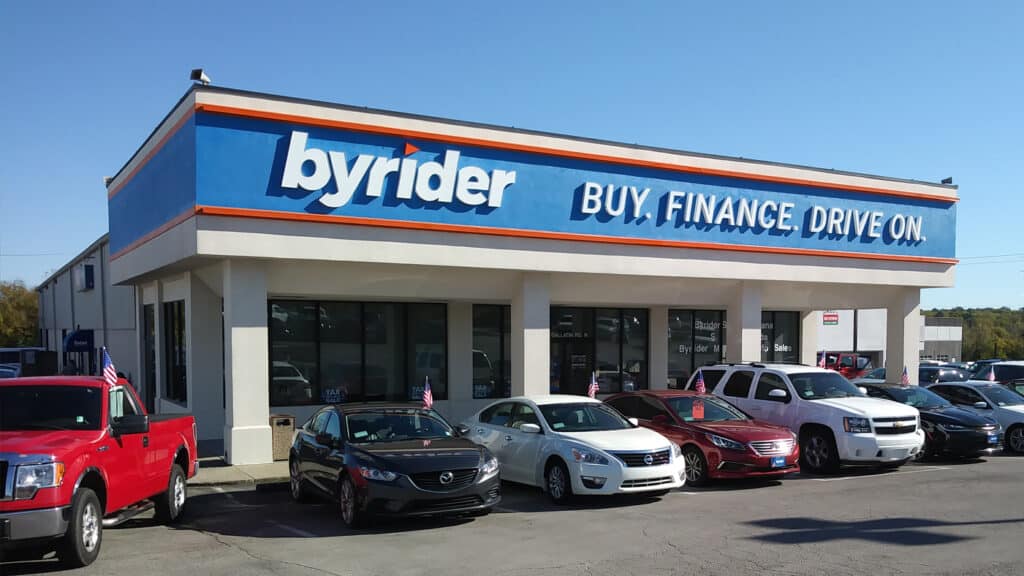
c) Customer analysis
Now that we have a good idea of the car dealership industry in your area as well as competition, now is time to focus on your target audience: customers.
Knowing your customer is extremely important before you get into any business. This is all the more relevant for car dealership where customer preferences and tastes are very different.
For example, if you are planning to get into a luxury car dealership business, you should look into:
- The estimated population of high-income people in your area
- Types of luxury cars that are in demand (hatchback, sedan, SUV, etc.)
- Shopping preference of your target customers (online or offline)
- How frequently do they buy (or exchange) new cars?
- Is their buying decision influenced by offers or discounts?
- What features do your target customers want in their new luxury cars?
- What type of additional services do they expect from their dealers?
4. Sales & Marketing Strategy
This is the section of your business plan where you outline your customer acquisition strategy. Try to answer the following questions:
- What are the different marketing strategies you will use?
- What are your Unique Selling Points (USPs)? In other words, how do you differentiate from your competitors?
- How do you intend to track the success of your marketing strategy ?
- What is your CAC or customer acquisition cost?
- What is your marketing budget?
What marketing channels do car dealerships use?
A few marketing channels that car dealership businesses typically use are:
- Signage, billboards
- PPC ads, Facebook ads, etc.
- Print media
- Loyalty programs
- Online local listing (Google Business)
- Content marketing (share content like vehicle maintenance tips, safe driving tips, etc.) on platforms like blogs, social media, etc.
- Word of mouth, recommendations
You must have a fair and nearly accurate estimate of your marketing budget. Therefore, make sure to budget for marketing accordingly in your financial projections.

What are your Unique Selling Propositions (USPs)?
In other words, how do you differentiate yourself vs. competitors? This is very important as you might need to win customers from competitors.
A few examples of USPs are:
- Products: you may be the exclusive distributor or a car make in your area for example
- Services : you may offer repairs and regular checkups for your customers
- Location : you store is closer to a busy road and/or to where your customers live
Your USPs will depend on your business model, competitor analysis, and target audience. Whatever your USPs are, it should appeal to your potential customers and attract them.
5. Management & People
You must address 2 things here:
- The management team and their experience/track record
- The organizational structure: the different team members and who reports to whom
Small businesses often fail because of managerial weaknesses. Thus, having a strong management team is vital. Highlight the experience and education of senior managers that you intend to hire to oversee your car dealership.
Describe their duties, responsibilities, and roles. Also, highlight their previous experience and explain how they succeeded in their previous roles.
Organization Structure
Even if you haven’t already hired a VP of sales, sales managers, support staff and any other relevant staff members, you must provide a chart of the organizational structure outlining the different teams, roles and their reporting lines.
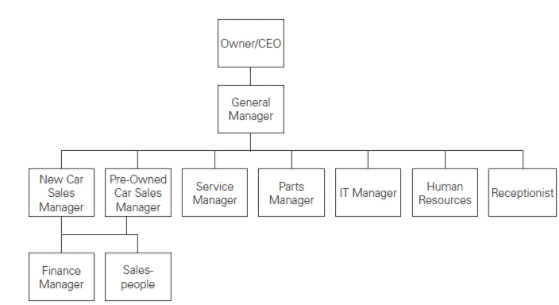
6. Financial Plan
The financial plan is perhaps, with the executive summary, the most important section of any business plan.
Indeed, a solid financial plan tells lenders that your business is viable and can repay the loan you need from them. If you’re looking to raise equity from private investors, a solid financial plan will prove them your car dealership is an attractive investment.
There should be 3 sections to your financial plan section:
- Your historical financials (only if you already operate the business and have financial accounts to show)
- The startup costs of your project (if you plan to start a new car dealership, or purchase new inventory, expand your store, etc.)
- The 5-year financial projections
a) Historical Financials (if any)
In the scenario where you already have some historical financials (a few quarters or a few years), include them. A summary of your financial statements in the form of charts e.g. revenue, gross profit and net profit is enough, save the rest for the appendix.
If you don’t have any, don’t worry, most new businesses don’t have any historical financials and that’s ok. If so, jump to Startup Costs instead.
b) Startup Costs
Before we expand on 5-year financial projections in the following section, it’s always best practice to start with listing the startup costs of your project. For a car dealership, startup costs are all the expenses you incur before you open your shop and starting making sales. These expenses typically are:
- The lease deposit for the commercial space you rent (if you don’t buy it)
- The design and renovation of the existing facilities
- The inventory costs (the initial stock of vehicles you must buy to sell them at opening)
For example, let’s assume you want to buy 30 light vehicles as a start for inventory, and you take on a loan where you need to put down 15% upfront. Now, assuming these vehicles each cost $50,000 on average, this means you must put down $300,000 yourself. This comes in addition with any other startup cost mentioned above (lease deposit, renovation costs, etc.).
c) 5-Year Financial Projections
In addition to startup costs, you will now need to build a solid 5-year financial model as part of your business plan for your car dealership .
Your financial projections should be built using a spreadsheet (e.g. Excel or Google Sheets) and presented in the form of tables and charts in your business plan.
As usual, keep it concise here and save details (for example detailed financial statements, financial metrics, key assumptions used for the projections) for the appendix instead.
Your financial projections should answer at least the following questions:
- How much revenue do you expect to generate over the next 5 years?
- When do you expect to break even?
- How much cash will you burn until you get there?
- What’s the impact of a change in pricing (say 20%) on your margins?
- What is your average customer acquisition cost?
You should include here your 3 financial statements (income statement, balance sheet and cash flow statement). This means you must forecast:
- The number of vehicles you sell over time ;
- Your expected revenue ;
- Operating costs to run the business ;
- Any other cash flow items (e.g. capex, debt repayment, etc.).
When projecting your revenue, make sure to sensitize pricing and the number of customers as a small change in these assumptions will have a big impact on your revenues.
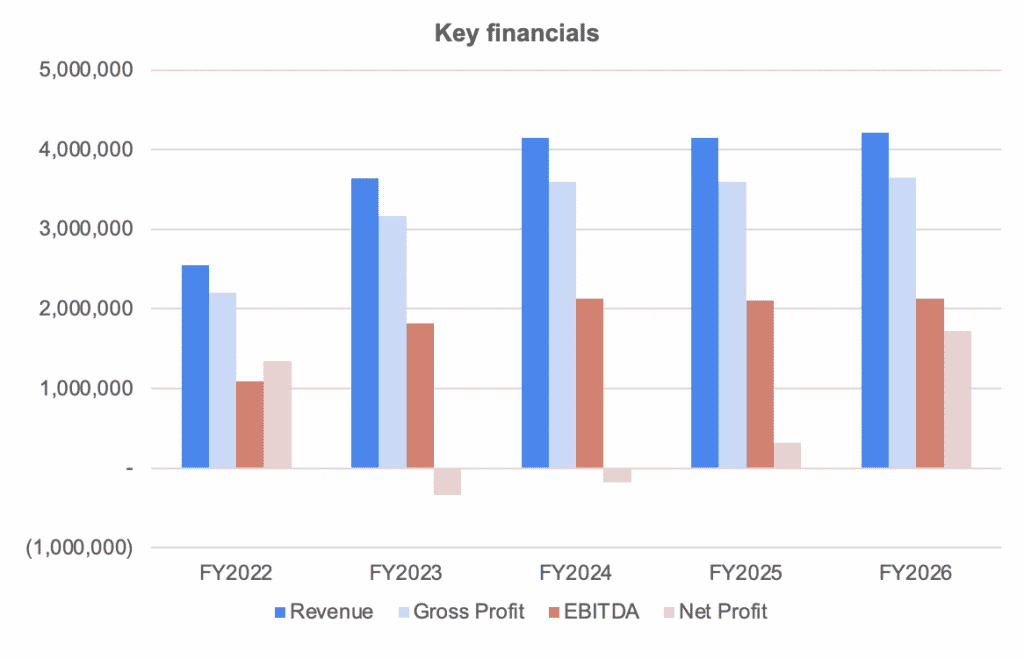
7. Funding Ask
This is the last section of the business plan of your car dealership. Now that we have explained what type of vehicles your company sells to whom and at what price, but also what’s your marketing strategy, where you go and how you get there, this section must answer the following questions:
- How much funding do you need?
- What financial instrument(s) do you need: is this equity or debt, or even a free-money public grant?
- How long will this funding last?
- Where else does the money come from? If you apply for a SBA loan for example, where does the other part of the investment come from (your own capital, private investors?)
If you raise debt:
- What percentage of the total funding the loan represents?
- What is the corresponding Debt Service Coverage Ratio ?
If you raise equity
- What percentage ownership are you selling as part of this funding round?
- What is the corresponding valuation of your business?
Use of Funds
Any business plan should include a clear use of funds section. This is where you explain how the money will be spent.
Will you spend most of the loan / investment to acquire the cost for the inventory (the vehicles)? Or will it cover mostly the cost of buying the land and building the store?
Those are very important questions you should be able to answer in the blink of an eye. Don’t worry, this should come straight from your financial projections. If you’ve built solid projections like in our car dealership financial model template , you won’t have any issues answering these questions.
For the use of funds, we recommend using a pie chart like the one we have in our financial model template where we outline the main expenses categories as shown below.
Privacy Overview
BizFundingResource.com
Auto Loan Company Business Plan and SWOT Analysis
Auto Loan Company Business Plan, Marketing Plan, How To Guide, and Funding Directory
The Auto Loan Company Business Plan and Business Development toolkit features 18 different documents that you can use for capital raising or general business planning purposes. Our product line also features comprehensive information regarding to how to start an Auto Loan Company business. All business planning packages come with easy-to-use instructions so that you can reduce the time needed to create a professional business plan and presentation.
Your Business Planning Package will be immediately emailed to you after you make your purchase.
- Bank/Investor Ready!
- Complete Industry Research
- 3 Year Excel Financial Model
- Business Plan (26 to 30 pages)
- Loan Amortization and ROI Tools
- Three SWOT Analysis Templates
- Easy to Use Instructions
- All Documents Delivered in Word, Excel, and PDF Format
- Meets SBA Requirements
Cars are expensive purchases and as such auto loan companies exist in order to provide the necessary capital in order to purchase cars. As such, these businesses are relatively immune from negative changes in the economy. These businesses generate extremely high gross margins from the ongoing interest that is paid for vehicle loan as well as closing fees that can be acquired at the time the vehicle is purchased. Typically, most auto loan companies usually start their operations with the capital base ranging anywhere from $2 million to $10 million depending on the number of loans that will be immediately issued at the onset of operations. Of course, this number may be substantially higher if there are third-party institutional buyers standing by to purchase the close automotive loans. This is one of the additional ways that these companies generate significant revenues via the sale of seasoned auto loans. The barriers to entry for this type of business are very high. This is due to the fact that there must be a number of regulations that must be dealt with in addition to having the appropriate amount of capital on hand in order to issue automotive loans.
Most investors are happy to provide a significant amount of capital to automotive loan companies given the high gross margins generated on a monthly basis. The economically secure nature of these revenues also ensures that there is a strong return on investment coupled with having a significant collateral base. As with any business that is looking to raise capital a business plan that contains a three-year to profit and loss statement, cash flow analysis, balance sheet, breakeven analysis, and business ratios page should be developed. Additionally, within the business plan – the automotive loan company credit procedures, protocols, and disbursement manual should be included as well. Most funding sources are going to want to see what collateral and credit standards will be used during the automotive lending process. Beyond this information, a full analysis regarding graphics, median household income, median family income, population density, population size, and competitive information should also be included. As many people now use the Internet to acquire auto loans it is imperative that this demographic analysis is extremely broad so that a very large number of potential borrowers can be targeted via the company’s operations.
After the business plan is developed is time to establish the auto loan company marketing plan. This is one of the most complex aspects of the business planning process given that there are thousands of specialty finance companies, banks, and private funding sources that provide auto loans to borrowers. Again, the high gross margins and strong collateral of these debt instruments has driven a significant amount of competition into the industry. One of the foremost aspects of the marketing plan should focus on online marketing. This includes having a proprietary website that allows users to fill out a lending application very quickly. It is important that this website have the proper functionality in place so that the credit check can be immediately completed once a borrower submit their application for an auto loan. One of the other ways that these businesses draw borrowers is through the use of social media. These days it is very important to have an expansive presence on social media platforms such as FaceBook, Twitter, Google+, and others in order to increase the visibility of the auto loan company brand name. This is going to be one of the primary ways that these companies need to continue to do their operations moving forward.
Frequently developed is the auto loan company SWOT analysis. This analysis focuses on the strengths, weaknesses, opportunities, and threats that are commonly found among these companies. As it relates the strengths, and auto loan company is able to put juice highly recurring streams of revenue from interest. Additionally, these companies can produce secondary income from close closing fees as well as the sale of seasoned loans to institutional buyers. For weaknesses, auto loan companies have a significant number of regulations as it relates to lending that they need to adhere to on a day-to-day basis. Also, there is a significant amount of competition within this industry. For opportunities, most auto loan companies expand their operations by acquiring additional rounds of capital that allow them to increase the number of loans that go through their pipeline. Pertaining to threats, there are no pieces of legislation that would impact the way that an auto loan company conducts business at this time. However, there may be changes in regulations as political shifts in the United States occur. It is important that appropriate legal counsel is retained in order to ensure that the auto loan company complies with the law at all times.
How to Start a Profitable Car Title Loan Business

Car title loans provide fast cash for customers in need of emergency funds by leveraging their vehicle’s value while still retaining ownership and use of their car. This growing lending niche offers lucrative potential for entrepreneurs interested in starting a car title loan business. This comprehensive guide covers how to start a car title loan company, state licensing, marketing strategies, maximizing profits, common challenges and future outlook.
Table of Contents
What is a Car Title Loan Business?
A car title loan business provides short-term secured loans to borrowers who use their vehicle’s title as collateral. The lender offers 25% to 50% of the car’s value in cash and holds the title until the quickly repaid loan plus fees are paid off. The borrower retains use of their vehicle during repayment. Interest rates are usually charged monthly.
Why Start a Car Title Loan Company?
Reasons entrepreneurs are attracted to the car title loan model include:
- Requires little startup capital
- Fast application and approval processes
- Secured by valuable asset (vehicle)
- Higher interest and fee income potential
- Additional revenue from renewals
- Recession resistant demand
- Minimal overhead expenses
- Scalable with multiple locations
Car title lending can generate very high ROI for owners when run efficiently.
Steps to Start a Car Title Loan Business
To launch a car title loan company, follow these key steps:
- Choose a business entity and establish licensing
- Understand your state’s car title loan laws and regulations
- Obtain required lending licenses and bonding
- Find affordable office space, ideally with parking
- Design workflow process and loan management systems
- Stock office supplies and documentation forms
- Hire and train loan officers/processors
- Partner with repossession and towing services
- Install security systems and surveillance
- Market loans and build community awareness
- Start approving and funding loans!
Take time upfront to build an organized and compliant foundation.
Licensing Requirements for Car Title Lenders
Car title loan companies must adhere to federal Truth in Lending Act (TILA) disclosure rules and interested rate caps under state law. Specific licensing often includes:
- State lending or consumer loan license
- Vehicle title lender registration
- City/county business licenses
- Sales permits and reseller certificate
- Zoning approvals and sign permits
- Sales tax ID number
- EIN from IRS
- FDIC certificate if offering checking accounts
Research requirements thoroughly before operating to avoid violations.
Writing a Car Title Loan Business Plan
A key startup step is creating a detailed business plan covering:
- Executive summary and company overview
- Startup costs – licenses, office, systems, marketing
- Revenue model and fee/rate structure
- Loan volume projections
- Staffing and operations model – workflow, volumes
- Target market – demographics, geography
- Competitor analysis
- Marketing plan with lead generation and sales strategies
- Funding sources – investment, loans, grants, investors
- Financial projections – profit and loss, cash flow , balance sheet
- Contingencies and risks
The plan provides a blueprint to guide the business launch and strategy.
How Much Does it Cost to Start a Car Title Loan Company?
You can start a small car title lending operation with around $25,000 to $50,000 in startup capital including:
- Licensing fees $2,000 – $5,000
- Lease deposit & first month $3,000 – $5,000
- Office furniture & computers $5,000 – $10,000
- Security system $2,000 – $3,000
- Signage $1,000 – $2,000
- Initial advertising and marketing $5,000 – $10,000
- Legal and professional fees $3,000 – $5,000
- Insurance $2,000 – $4,000
- Working capital $10,000 – $25,000
Exact budget will depend on state requirements, location, scale, and systems needed.
Car Title Loan Business Model
Car title loan companies generate revenue through:
- High interest rates charged – average 25% monthly
- Origination fees – average $100 per new loan
- Late/collection fees – if payments are late
- Renewal fees – for loan extensions
- Repossession and sale of vehicle if defaulted
Gross revenue on a typical 1-month $1,000 car title loan would be approximately $250.
Using proper underwriting, the business can earn substantial income while providing an essential service to those in need.
How Much Can You Profit in the Car Title Loan Business?
A well-run car title lending operation can produce an average of $5,000 to $15,000 in monthly net profit . Profits are dependent on loan volume, interest rates charged, and the ability to keep defaults and overhead low. Larger companies with multiple locations can earn over $50,000 per month.
Marketing a Car Title Loan Company
Promoting your lending services is critical to generating new customers. Effective marketing activities include:
- Digital advertising – Google, Facebook and banner ads focused locally. Target people searching for fast cash solutions.
- SEO optimization – Ensure your website ranks well for related keyword searches like “car title loans near me”.
- Signage and vehicle wraps – Place eye-catching and directional signs around town and on company cars.
- Direct mail – Send loan offer postcards and flyers to nearby households.
- Networking – Join and sponsor local chambers, charities and business associations.
- Referrals – Encourage refer-a-friend programs through loyal customers.
- Reputation building – Gain positive online reviews and testimonials. Be involved in the community.
- Press releases – Promote new location openings, unique loan products, awards.
Car Title Loan Underwriting Process
The underwriting process involves:
- Verifying borrower identity, income, and residence
- Confirming vehicle free-and-clear title and ownership
- Inspecting car condition, mileage, value
- Checking loan status through clearance companies
- Reviewing borrower’s credit report and finances
- Assessing repayment ability with monthly budget
- Approving suitable loan amounts in line with policy
- Completing all required legal loan documentation
- Disbursing funds to customer
Applying sound underwriting protects the business from defaults.
Tips for Optimizing Car Title Loan Profits
Best practices for maximizing profits include:
- Maintain lean overhead structure and efficient operations
- Employ strong underwriting but expedite funding
- Develop referral rewards program to increase retention
- Extend renewal grace periods to encourage on-time payments
- Increase rates and fees judiciously based on competitive research
- Institute collection call and late payment reminder procedures
- Boost customer lifetime value with additional financial products
- Explore expansion into payday loans and check cashing
- Offer bi-weekly or semi-monthly payments to ease borrower cash flow
- Start loyalty program for continuous customers
- Sell repossessed asset quickly to minimize losses
Finding the optimal balance between growth, defaults, and expenses takes experience and analysis.
Common Challenges Facing Car Title Loan Companies
Top issues to be aware of include:
- High default rates if underwriting is not rigorous
- Industry perception and bad public image
- Regulatory compliance burden and legal threats
- Security risks and potential robberies
- Short term loans require constant new customer acquisition
- Limited scalability due to state by state legislation
- Intense competition from payday lenders and banks
- Technology integration for analytics and efficiency
- Seasonal loan demand fluctuations throughout year
Proactive planning and processes can help mitigate these risks.
Insurance and Regulations for Car Title Lenders
Proper insurance policies include:
- General liability – protect against customer injuries
- Commercial property – covers office assets & equipment
- Surety bonds – required in some states
- Business interruption – compensates for lost income
- Workers comp – for employees
- Auto insurance – for company vehicle fleet
- E&O insurance – protects against underwriting errors
Adhere to all federal and state lending rules, disclosures, rates caps and licensing requirements.
Should You Start a Car Title Loan Company?
Before diving in, consider:
- Your risk tolerance and aptitude for lending
- Required licensing timeframes and costs in your state
- Competitor saturation in target locations
- Compliance demands and regulatory shifts
- Interest rates justified relative to risk
- Abilities to minimize defaults through underwriting
- Comfort with collateral seizure if necessary
- Ongoing funding for marketing and growth
- Access to quality referral partners
- Infrastructure for security and recordkeeping
The business can be extremely lucrative but does carry unique challenges.
Trends and Future of the Car Title Loan Industry
- Increased digital application and servicing
- Greater consumer demand for fast financing options
- Trying new customer acquisition strategies like radio/TV
- Regulatory crackdowns in some states
- Partnering with dealers on auto loans
- Offering longer 2-3 month loan terms
- New fintech entrants and payoff consolidation apps
- Lower default rates attributed to economic stability
Convenience and responsible service will be differentiators going forward.
A car title loan business provides an appealing avenue to profit by helping customers leverage their vehicle asset for quick cash loans. However, new entrants must carefully adhere to regulations, implement strong underwriting, maximize marketing ROI and streamline operations to succeed long-term. Used appropriately, car title loans fill an important niche effectively serving customers through temporary financial challenges or emergencies. By following the guidance in this article, your new lending business can generate substantial wealth while making a positive community impact .
Frequently Asked Questions
How much money do you need to start a car title loan business.
Around $25,000 to $50,000 is recommended to sufficiently cover startup costs like licensing, office space, legal, marketing, supplies and adequate operating capital.
Do you need a lot of money to start in the car title loan business?
The relative startup costs are low compared to many other finance business models, like banks or auto dealers. Initial investment can often earn ROI in under a year.
What are the profit margins on car title loans?
Typical net profit margins range from 30% to 60%+ on car title loans after costs. Profitability relies heavily on keeping defaults and overhead expenses low.
How much interest can you charge on car title loans?
Maximum interest rates and fees vary by state but average around 25% monthly. Some states have caps as low as 30% APR. Research state statutes.
How do car title loans work?
Borrowers receive 25% to 50% of their car’s value in cash. They keep driving the car while repaying the loan plus fees over a short term, usually 30 days. The title is collateral if defaulted.
Is a car title loan a good idea?
For borrowers, the high interest rates mean car title loans should only be used as a last resort for quick funds. Shop rates and examine alternatives before borrowing.
Do you need good credit for a car title loan?
No, credit checks are rarely part of the application since the vehicle title is the collateral. All that is typically required is proof of income, residence, and a lien-free car title.
Are car title loans legal?
Car title loans are legal in about half of U.S. states but are restricted or banned in others. Regulations and interest rate caps vary widely.
How do car title loans affect your credit?
Car title lenders usually don’t report activity to credit bureaus. However, severe late payments or repossession can negatively impact your score.
What is the default rate on car title loans?
Industry average default rates are estimated to range from 10% to 20%+. Effective underwriting and collections help minimize defaults.
I do not provide any financial advice or recommendations. The article is intended for educational and informational purposes only. Readers should conduct their own due diligence and consult qualified professionals before making business or investment decisions.

Sarah Teague brings 5 years of professional writing experience to her role as content writer for Walletminded. In this position, Sarah creates compelling articles, blog posts, and other digital content that engage readers and promote the Walletminded brand. Before joining Walletminded, Sarah honed her writing skills as a freelance writer and ghostwriter. Her work included crafting blog posts and web content for financial services, technology, and healthcare clients. Sarah holds a bachelor's degree in English from Emory University, where she also served as editor of the campus literary journal. She continues to volunteer her time as a writing mentor for youth in her community. When she's not meticulously crafting content, you can find Sarah attempting new baking recipes and enjoying hikes with her dog. She also loves curling up with a good memoir.
View all posts
Leave a Reply Cancel reply
Your email address will not be published. Required fields are marked *
Save my name, email, and website in this browser for the next time I comment.
RELATED STORIES

Can You Superscript and Subscript in Canva?

How to Demonstrate Your Fit for an Upwork Project

What is SSO and How Does it Work on GoDaddy?

Easy To Start Online Business Ideas That Make Money

How to Start a Concrete Driveway Resurfacing Business

How to Start a Boat Storage Business

Starting a Coinless Laundry Business: An In-Depth Guide for Entrepreneurs

How to Start a Carpet Cleaning Business: An In-Depth Guide for Entrepreneurs

Renting Out ADUs: An In-Depth Guide for Entrepreneurs

Renting Out Garage Space

Car Dealership Business Plan Template
Written by Dave Lavinsky

Car Dealership Business Plan
Over the past 20+ years, we have helped over 4,000 entrepreneurs create business plans to start and grow their car dealerships. On this page, we will first give you some background information with regards to the importance of business planning. We will then go through a car dealership business plan template step-by-step so you can create your plan today.
Download our Ultimate Car Dealership Business Plan Template here >
What Is a Car Dealership Business Plan?
A business plan provides a snapshot of your car dealership as it stands today, and lays out your growth plan for the next five years. It explains your business goals and your strategy for reaching them. It also includes market research to support your plans.
Why You Need a Business Plan for Your Car Dealership
If you’re looking to start a car dealership or grow your existing car dealership you need a business plan. A business plan will help you raise funding, if needed, and plan out the growth of your car dealership in order to improve your chances of success. Your car dealership business plan is a living document that should be updated annually as your company grows and changes.

Source of Funding for Car Dealership Businesses
With regards to funding, the main sources of funding for a car dealership are personal savings, bank loans and angel investors. With regards to bank loans, banks will want to review your business plan and gain confidence that you will be able to repay your loan and interest. To acquire this confidence, the loan officer will not only want to confirm that your financials are reasonable. But they will want to see a professional plan. Such a plan will give them the confidence that you can successfully and professionally operate a business.
The second most common form of funding for a car dealership is angel investors. Angel investors are wealthy individuals who will write you a check. They will either take equity in return for their funding, or, like a bank, they will give you a loan.
Finish Your Business Plan Today!
Your business plan should include 10 sections as follows:
Executive Summary
Your executive summary provides an introduction to your business plan, but it is normally the last section you write because it provides a summary of each key section of your plan.
The goal of your Executive Summary is to quickly engage the reader. Explain to them the type of car dealership you are operating and the status; for example, are you a startup, do you have a car dealership that you would like to grow, or are you operating a chain of car dealerships.
Next, provide an overview of each of the subsequent sections of your plan. For example, give a brief overview of the car dealership industry. Discuss the type of car dealership you are operating. Detail your direct competitors. Give an overview of your target customers. Provide a snapshot of your marketing plan. Identify the key members of your team. And offer an overview of your financial plan.
Company Analysis
In your company analysis, you will detail the type of car dealership you are operating.
For example, you might operate one of the following types:
- New Car Dealers : this type of car dealership business typically sells both new and used passenger vehicles. Usually, this type of dealership also has a service department and also sells parts.
- Used Car Dealership : this type of car dealership sells used passenger vehicles, including cars, light trucks, sports utility vehicles (SUVs) and passenger vans.
- Online Car Dealership : this type of car dealership retails automobiles online to consumers and businesses and provides services to aid in the purchase of automobiles. Some players offer their customers trade-in, car financing and car selling services.
In addition to explaining the type of car dealership you operate, the Company Analysis section of your business plan needs to provide background on the business.
Include answers to question such as:
- When and why did you start the business?
- What milestones have you achieved to date? Milestones could include sales goals you’ve reached, new store openings, etc.
- Your legal structure. Are you incorporated as an S-Corp? An LLC? A sole proprietorship? Explain your legal structure here.
Industry Analysis
In your industry analysis, you need to provide an overview of the car dealership business.
While this may seem unnecessary, it serves multiple purposes.
First, researching the car dealership industry educates you. It helps you understand the market in which you are operating.
Secondly, market research can improve your strategy particularly if your research identifies market trends. For example, if there was a trend towards vehicles, it would be helpful to ensure your plan calls for plenty of options.
The third reason for market research is to prove to readers that you are an expert in your industry. By conducting the research and presenting it in your plan, you achieve just that.
The following questions should be answered in the industry analysis section of your car dealership business plan:
- How big is the car dealership business (in dollars)?
- Is the market declining or increasing?
- Who are the key competitors in the market?
- Who are the key suppliers in the market?
- What trends are affecting the industry?
- What is the industry’s growth forecast over the next 5 – 10 years?
- What is the relevant market size? That is, how big is the potential market for your car dealership. You can extrapolate such a figure by assessing the size of the market in the entire country and then applying that figure to your local population.
Customer Analysis
The customer analysis section of your car dealership business plan must detail the customers you serve and/or expect to serve.
The following are examples of customer segments: college students, soccer moms, baby boomers, etc.
As you can imagine, the customer segment(s) you choose will have a great impact on the type of car dealership you operate. Clearly baby boomers would want a different atmosphere, pricing and product options, and would respond to different marketing promotions than college students.
Try to break out your target customers in terms of their demographic and psychographic profiles. With regards to demographics, include a discussion of the ages, genders, locations and income levels of the customers you seek to serve. Because most car dealerships primarily serve customers living in their same city or town, such demographic information is easy to find on government websites.
Psychographic profiles explain the wants and needs of your target customers. The more you can understand and define these needs, the better you will do in attracting and retaining your customers.
Finish Your Car Dealership Business Plan in 1 Day!
Don’t you wish there was a faster, easier way to finish your business plan?
With Growthink’s Ultimate Car Dealership Business Plan Template you can finish your plan in just 8 hours or less!
Competitive Analysis
Your competitive analysis should identify the indirect and direct competitors your business faces and then focus on the latter.
Direct competitors are other car dealerships.
Indirect competitors are other options that customers have to purchase from that aren’t direct competitors. This primarily includes private sellers. You need to mention such competition to show you understand that not everyone in the market for a car shops at a dealership.
With regards to direct competition, you want to detail the other car dealerships with which you compete. Most likely, your direct competitors will be car dealerships located very close to your location.
For each such competitor, provide an overview of their businesses and document their strengths and weaknesses. Unless you once worked at your competitors’ businesses, it will be impossible to know everything about them. But you should be able to find out key things about them such as:
- What types of customers do they serve?
- What types of automobiles do they offer?
- What is their pricing (premium, low, etc.)?
- What are they good at?
- What are their weaknesses?
With regards to the last two questions, think about your answers from the customers’ perspective. And don’t be afraid to stand outside your competitors’ locations and ask customers as they leave what they like most and least about them.
The final part of your competitive analysis section is to document your areas of competitive advantage. For example:
- Will you provide superior products and/or services?
- Will you provide cars that your competitors don’t offer?
- Will you make it easier or faster for customers to acquire your products?
- Will you provide better customer service?
- Will you offer better pricing?
Think about ways you will outperform your competition and document them in this section of your plan.
Marketing Plan
Traditionally, a marketing plan includes the four P’s: Product, Price, Place, and Promotion. For a car dealership business plan, your marketing plan should include the following:
Product : in the product section you should reiterate the type of car dealership that you documented in your Company Analysis. Then, detail the specific products you will be offering. For example, in addition to selling new cars, will you offer leasing options?
Price : Document the prices you will offer and how they compare to your competitors. Essentially in the product and price sub-sections of your marketing plan, you are presenting the inventory you will maintain and the price ranges.
Place : Place refers to the location of your car dealership. Document your location and mention how the location will impact your success. For example, is your car dealership located next to a high-traffic retail area, or on a main thoroughfare, etc. Discuss how your location might provide a steady stream of customers.
Promotions : the final part of your car dealership marketing plan is the promotions section. Here you will document how you will drive customers to your location(s). The following are some promotional methods you might consider:
- Making your car dealership extra appealing to attract passing customers
- Pay per click advertising
- Advertising in local papers and magazines
- Reaching out to local bloggers and websites
- Social media advertising
- Local radio advertising
- Banner ads at local venues
Building Trust
Building trust between a car dealer and its customers is vital to a successful sales strategy. This should be clear in the business plan, where funders look to see the feasibility of the company once it’s launched. Earning customer trust is important because of the bad reputation, deserved or not, for car salespeople to try to take advantage of customers and because of the high amount of stress which the purchase of a large item like a car causes for buyers.
Below are the best ways to build trust in your customers.
Referrals and Testimonials
Running a dealership with a heavy focus on satisfied customers referring other potential customers can create positive word-of-mouth between contacts who already know and trust each other. An additional element to this is securing testimonial statements (either written or videotaped) from happy customers. This requires having those happy customers in the first place, as customers can sense if the testimonials are canned and will mistrust even further.
Transparency
If auto dealerships were extremely clear about all pricing, fees, and costs of ownership up front, customers might change their opinion of these companies. However, too often there is a great focus on a low sticker price to attract customers who later on feel they’ve been lied to when all of the add-on charges are explained. Can your dealership change this industry practice and make transparency into a competitive advantage?
Taking Your Time
By taking the sales process at a rate that the customer is comfortable with, you recognize that it is a difficult step for customers to walk into the world of the dealer and play on his home turf, so to speak. They will be feeling defensive and a bit thrown off, so tell them that you will take the time to answer any questions they have and to make sure they understand and have considered their options before moving forward.
Operations Plan
While the earlier sections of your car sales business plan explained your goals, your operations plan describes how you will meet them. Your operations plan should have two distinct sections as follows.
Everyday short-term processes include all of the tasks involved in running your car dealership such as serving customers, completing necessary paperwork, keeping the dealership clean, etc.
Long-term goals are the milestones you hope to achieve. These could include the dates when you expect to serve your 1,000th customer, or when you hope to reach $X in sales. It could also be when you expect to hire your Xth employee or launch a new location.
Management Team
To demonstrate your car dealership’s ability to succeed as a business, a strong management team is essential. Highlight your key players’ backgrounds, emphasizing those skills and experiences that prove their ability to grow a company.
Ideally you and/or your team members have direct experience in the car dealership business. If so, highlight this experience and expertise. But also highlight any experience that you think will help your business succeed.
If your team is lacking, consider assembling an advisory board. An advisory board would include 2 to 8 individuals who would act like mentors to your business. They would help answer questions and provide strategic guidance. If needed, look for advisory board members with experience in car dealerships and/or successfully running retail and small businesses.
Financial Plan
Your financial plan should include your 5-year financial statement broken out both monthly or quarterly for the first year and then annually. Your financial statements include your income statement, balance sheet and cash flow statements.
Income Statement : an income statement is more commonly called a Profit and Loss statement or P&L. It shows your revenues and then subtracts your costs to show whether you turned a profit or not.
In developing your income statement, you need to devise assumptions. For example, will you serve 20 customers per week or 75? And will sales grow by 2% or 10% per year? As you can imagine, your choice of assumptions will greatly impact the financial forecasts for your business. As much as possible, conduct research to try to root your assumptions in reality.
Balance Sheets : While balance sheets include much information, to simplify them to the key items you need to know about, balance sheets show your assets and liabilities. For instance, if you spend $100,000 on building out your car dealership, that will not give you immediate profits. Rather it is an asset that will hopefully help you generate profits for years to come. Likewise, if a bank writes you a check for $100.000, you don’t need to pay it back immediately. Rather, that is a liability you will pay back over time.
Cash Flow Statement : Your cash flow statement will help determine how much money you need to start or grow your business, and make sure you never run out of money. What most entrepreneurs and business owners don’t realize is that you can turn a profit but run out of money and go bankrupt. For example, let’s say a company approached you with a $1,000,000 fleet order, that would cost you $500,000 to fulfill. Well, in most cases, you would have to pay that $500,000 now for inventory, transportation, employee salaries, etc. But let’s say the company didn’t pay you for 180 days. During that 180 day period, you could run out of money.
In developing your Income Statement and Balance Sheets, be sure to include several of the key costs needed in starting or growing a car dealership:
- Location build-out including design fees, construction, etc.
- Cost of equipment like computer hardware and software, etc.
- Cost of maintaining an adequate amount of supplies
- Payroll or salaries paid to staff
- Business insurance
- Taxes and permits
- Legal expenses
Attach your full financial projections in the appendix of your plan along with any supporting documents that make your plan more compelling. For example, you might include your store design blueprint or location lease.
Car Dealership Business Plan Summary
Putting together a business plan for your car dealership is a worthwhile endeavor. If you follow the template above, by the time you are done, you will truly be an expert. You will really understand the car dealership business, your competition and your customers. You will have developed a marketing plan and will really understand what it takes to launch and grow a successful car dealership business.
Download Our Car Dealership Business Plan PDF
You can download our car dealership business plan PDF here . This is a business plan template you can use in PDF format.
Car Dealership Business Plan FAQs
What is the easiest way to complete my car dealership business plan.

Where Can I Download a Car Dealership Business Plan PDF?
You can download our car dealership business plan PDF template here . This is a business plan template you can use in PDF format.
Don’t you wish there was a faster, easier way to finish your Car Dealership business plan?
OR, Let Us Develop Your Plan For You
Since 1999, Growthink has developed business plans for thousands of companies who have gone on to achieve tremendous success. Click here to see how Growthink’s business plan advisors can give you a winning business plan.
Other Helpful Automotive Business Plan Articles & Templates

Business Auto Loans
Financing available at low rates, business advantage auto loans, requirements:.
- Minimum 2 years in business
- Minimum vehicle value of $10,000
- Maximum vehicle age of 5 years
- Less than 75,000 miles
Limited-time Offer:
- Exclusive incentives with the purchase of a new Mercedes-Benz vehicle. Learn more " aria-label="Footnote 3"> Footnote [3]
Advertised as low as APRs (annual percentage rates) are effective as of March 5, 2024 are subject to change and assumes excellent borrower credit history. Your actual APR may differ based on your credit history, approved loan amount, term, state of residence and applicable discounts, such as Preferred Rewards for Business. These discounts will be reflected in your individual APR quote if you are approved for a loan. Subject to credit approval; some restrictions may apply. The following example(s) reflect representative credit terms made available to applicants and are for informational purposes only. They may not reflect the loan amount, term, APR and estimated payment for your loan. Example: A 5-year, fixed-rate new car loan for $62,000 would have 60 monthly payments of $1,228 each, at an annual percentage rate (APR) of 6.99%.
Calculate your monthly loan payment
* Important note about this calculator: The figures entered on the input page of this calculator are for hypothetical purposes only. You should enter figures that are appropriate to your individual situation. " aria-label="Footnote 4"> Footnote [4]
Estimated monthly payments
Get more with Preferred Rewards
Applying is easy, apply online.
Online application is easy to complete.
Lock in your rate " aria-label="Footnote 2"> Footnote [2]
Your 30-day rate lock gives you time to shop knowing exactly what you can afford.
Go get your vehicle
Upon approval, receive a check made payable to the seller or dealer.
Financing is easier at authorized dealers
Need a commercial vehicle.
Vehicles over 2.5 tons can be financed through a Bank of America Equipment Loan.
Talk to a small business specialist » about a commerical vehicle loan.

Need a lease?
Find out if leasing is right for you.
Talk to a small business specialist » about leasing.
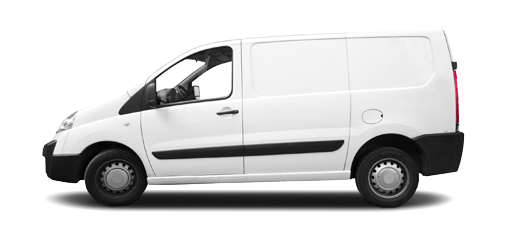
So much more than a loan
Expert insights.
Explore financing options and cash flow strategies on Small Business Resources .
Free business credit scores
View your business credit scores " aria-label="Footnote 7"> Footnote [7] for free, powered by Dun and Bradstreet.
Interest rate discounts
Pay less interest as a Preferred Rewards for Business member.
Connect with us

Auto Loan Business Plan
$59.00 $39.00 3 reviews
Resources On Auto Loan
- Financial Model
- Value Proposition
- One-Page Business Plan
- SWOT Analysis
- Business Model
Marketing Plan
- Bundle Business Plan & Fin Model
- Description
Executive Summary
Products & services, market analysis.
- Management Plan
- Financial Plan
The Auto Loan Business Plan startup is aiming to solve a common issue that many individuals face when seeking to purchase a personal vehicle - the lack of access to affordable and trustworthy financing options. Many financing institutions have strict eligibility requirements or charge high-interest rates, which can make it difficult for individuals to secure financing for their vehicle purchase. This creates an identifiable need in the market for a reliable and trustworthy auto loan provider, which the Auto Loan Business Plan startup is filling. We aim to provide convenient and manageable payment plans for personal vehicles, with competitive interest rates and exceptional customer service to make the loan approval and servicing process as seamless as possible. By partnering with local vehicle dealerships and working closely with banks and credit unions, we aim to establish ourselves as a leading auto loan provider in the Los Angeles area and fill the gap in the market for affordable and trustworthy financing options for personal vehicles.
The Auto Loan Business Plan startup aims to provide a solution to individuals seeking to purchase a personal vehicle in the Los Angeles area. We understand that purchasing a vehicle can be a major financial burden, especially for those who may not have enough savings to make a large payment upfront. Our solution is to provide auto loans to our customers, with the vehicle serving as collateral for the loan.
We will be working closely with banks and credit unions to offer competitive interest rates, making the loan repayment process manageable for our customers. In addition, we will be providing exceptional customer service and support to ensure that our customers are satisfied with our services and maintain a positive relationship with us.
Through our solution, we aim to simplify the auto loan approval process and provide a convenient and manageable payment plan to our customers, allowing them to purchase their dream vehicle without financial stress.
Target Market
Competition.
The auto loan market is highly competitive, with financing institutions like banks and credit unions being the primary alternatives in the market. These institutions offer auto loans with competitive interest rates and flexible repayment terms, often requiring the vehicle to serve as collateral for the loan. Additionally, many vehicle dealerships offer in-house financing options for their customers. While these alternatives exist, Auto Loan Business Plan aims to differentiate itself by providing exceptional customer service, streamlined loan approval and servicing processes, and establishing long-term partnerships with local vehicle dealerships. By offering a convenient and manageable payment plan for personal vehicles, we aim to be a reliable and trustworthy auto loan provider within the Los Angeles area.
Financial Summary
Key highlights of the financial plan for the Auto Loan Business Plan startup are:
- Total funding required to start the business is $2,000,000.
- The primary expenses will be loan origination and servicing costs, marketing and advertising expenses, and salaries for skilled loan underwriters and servicers.
- In the first year of operation, the target is to acquire a loan portfolio of $10,000,000 and generate a revenue stream of $1,200,000.
- The five-year plan is to expand the customer base and achieve a loan portfolio of $50,000,000, generating a revenue stream of $6,000,000.
- The revenue will come from the interest on auto loans.
- Key partners for the business will include vehicle dealerships for referrals and partnerships.
- The cost structure will include loan origination and servicing costs, and marketing and advertising expenses.
- Profitability will be dependent on successful and efficient loan underwriting and servicing, and establishing strong customer relationships.
Funding Requirements
For the Auto Loan Business Plan startup, we require a total funding of $2,000,000 that will be invested in the following areas:
- Marketing and advertising - to build brand awareness and attract customers
- Loan origination and servicing costs - to cover the expenses of offering and managing auto loans
- Salaries for skilled loan underwriters and servicers - to ensure high-quality loan services and customer support
This amount will enable us to establish ourselves as a reliable auto loan provider in the Los Angeles area, and achieve our first year's goals of acquiring a $10,000,000 loan portfolio and generating a revenue stream of $1,200,000. With a solid financial plan and clear business strategy, we believe that we can become a leader in the auto loan industry within the next five years and generate a revenue stream of $6,000,000 while expanding our services to a wider demographic. We are confident that our business model and financial projections will be attractive to potential investors and look forward to discussing funding opportunities.
Milestones and Traction
As the Auto Loan Business Plan startup, we have a clear roadmap to achieve our goals and establish ourselves as a reliable auto loan provider in the Los Angeles area. Below is a table outlining our current status and specific milestones we plan to hit:
With a roadmap in place and a clear plan to achieve our milestones, we are confident in our ability to establish ourselves as a leader in the auto loan industry in Los Angeles within the next five years.
Problem Worth Solving
The problem that our Auto Loan Business Plan startup intends to solve is the challenge faced by many individuals seeking to purchase a personal vehicle. The cost of vehicles in the United States can be a significant financial burden, and many individuals cannot afford to pay for a vehicle upfront. This creates a need for financing options to make owning a vehicle achievable.
Banks and credit unions offer auto loans to individuals, but the process can be time-consuming, and approval may not be guaranteed. Many individuals face difficulty in securing auto loan approval, particularly those with low credit scores or no credit history. Our goal is to provide a solution for those individuals by offering a seamless loan approval and servicing process, with competitive interest rates and exceptional customer service.
Our value proposition is to provide convenient and manageable payment plans for personal vehicles, making it accessible to a wider demographic. By providing a reliable and trustworthy auto loan service, we aim to address the pain point of individuals seeking to purchase a personal vehicle but face challenges in obtaining financing options that meet their needs.
Our Solution
Validation of problem and solution.
According to recent studies, over 85% of individuals in the US rely on personal vehicles as their primary mode of transportation. However, the high cost of purchasing a vehicle can make it difficult for many individuals to own a car outright. This is where our Auto Loan Business Plan comes in, providing affordable financing options for those seeking to purchase a personal vehicle.
We have conducted extensive market research to validate our business idea and have found that there is a high demand for our services in the Los Angeles area. Our partnerships with local vehicle dealerships and financing institutions have further strengthened our solution, providing customers with a reliable and convenient payment plan for their personal vehicles.
We have also conducted test runs of our loan approval and servicing process, which have resulted in quick turnaround times and positive customer feedback. This further validates our solution and the need for our business in the auto loan industry.
Product Overview
Auto Loan Business Plan provides financing to individuals seeking to purchase a personal vehicle. Our primary service is auto loans, with the vehicle serving as collateral for the loan. We work closely with banks and credit unions to provide competitive interest rates to our customers and ensure a seamless loan approval and servicing process.
Our services benefit individuals who need a personal vehicle with a manageable payment plan. We provide convenient and competitive interest rates, quick loan approval, and exceptional customer service to maintain a positive relationship with our customers. Our partnerships with local vehicle dealerships also help us extend our services to more customers.
We aim to establish ourselves as a reliable and trustworthy auto loan provider within the Los Angeles area. Our focus on providing exceptional customer service and support will ensure that our customers have a positive experience with us and choose us as their preferred auto loan provider.
As a new business in the auto loan industry, the Auto Loan Business Plan startup has a clear road map for establishing its services and growing its customer base:
By following this road map, we are confident in our ability to establish ourselves as a reliable and trustworthy auto loan provider within the Los Angeles area and achieve our desired financial and funding goals.
Market Segmentation
Our potential customers can be segmented into the following groups:
Our focus will be on targeting prime borrowers as they represent the largest segment and have the highest potential for revenue. However, we will also cater to subprime borrowers by offering flexible payment plans and appealing interest rates. While first-time buyers represent a smaller segment, we will also market to them through partnerships with vehicle dealerships and targeted advertising campaigns.
Target Market Segment Strategy
Our ideal customers are individuals seeking to purchase a vehicle who may not have the full amount upfront or prefer a manageable payment plan. Our focus is on providing convenient and accessible financing options to those with average or above-average credit scores. We believe that by targeting this segment, we can provide a reliable and affordable solution for their personal transportation needs, while generating a steady flow of revenue through interest payments.
Key Customers
Our ideal customer archetype is the middle-class American consumer who is seeking a reliable mode of transportation for their daily commute and personal use. This segment values convenience and affordability in their car purchase, and they rely heavily on financing institutions to provide manageable payment plans. They are also likely to be loyal customers who will advocate for our business to family and friends who are also in need of auto loans. By catering to the needs of this key customer segment, we aim to build a strong base of satisfied customers and establish a reputable brand presence in the auto finance industry.
Future Markets
Based on the analysis above, there is a high and consistent demand for auto loans in the US. Our business model, which focuses on providing convenient and manageable payment plans, is well-suited to meet this demand. As we continue to partner with vehicle dealerships and improve our customer service and support, we anticipate significant growth opportunities in this market.
Here is a table outlining some potential competitors in the auto loan industry:
While our interest rates and loan terms may differ from our competitors, our focus on exceptional customer service and personalized support will set us apart in the marketplace.
Marketing and Sales Plan
Our marketing and advertising strategy will focus on building partnerships with vehicle dealerships to drive referrals and increase brand awareness in the community. We will also invest in targeted online advertising to reach potential customers in the market for a personal vehicle. Our advertising channels will include search engine marketing, display advertising, and social media advertising. Our goal is to increase loan originations by 20% in the first year of operation. Our marketing budget for the first year will be $100,000, with a focus on cost-effective digital advertising channels.
Location and Facilities
At Auto Loan Business Plan, our primary focus is providing exceptional customer service and support. While there is no new technology that defines our business, we are committed to staying up-to-date with the latest software and tools to streamline processes and provide the smoothest experience possible for our customers.
We will be utilizing a mix of traditional and online marketing strategies to reach our target audience and generate business. This includes online advertising, social media, email marketing, as well as in-person referrals and partnerships.
Additionally, we will be implementing loan management software to ensure efficient loan underwriting and servicing, as well as provide real-time updates to customers on their loan status and payment schedule.
Overall, while technology is not a defining aspect of our business model, we recognize its potential to improve our operations and enhance the customer experience, and are committed to utilizing the best tools available to us.
Equipment and Tools
There are several equipment and tools required to run an auto loan business. These include:
The loan origination and servicing software are the most crucial tools required for the smooth operation of the business. These software systems automate the loan application, approval, and servicing processes, which significantly reduce the administrative burden. The office equipment is also essential for day-to-day tasks, such as document preparation and communication with customers.
Marketing collateral and a website are required to promote the business and attract potential customers. Advertising costs, both online and offline, are also necessary to reach a broader audience and increase brand awareness. The total cost of equipment and tools required for the business amounts to $59,500.
Management and Organization
Organizational structure.
Below is an overview of the structure of our Auto Loan Business Plan, including the roles and responsibilities of specific employees and the flow of information between levels of the organization:
Communication flows vertically through levels of the organization with regular check-ins and status updates. We prioritize transparency and open communication to ensure the best possible outcomes for our customers and the company.
Management Team
As we anticipate the growth of our auto loan business, we have established a list of potential candidates who are capable of taking on high-level management roles within the company. Our management team will be led by experienced professionals who have years of experience in the finance and lending industry. They will be responsible for overseeing the company's day-to-day operations, managing and supervising loan underwriters and servicers, and ensuring that our services meet the standards and expectations of our customers.
We believe that the success of our business will depend largely on the quality of our management team. Therefore, we will prioritize the recruitment of the most qualified individuals who share our vision and values. Our management team will have the skills, expertise, and leadership qualities necessary to drive the growth and development of our auto loan business and enhance our customers' experience.
Management Team Gaps
Currently, there are no gaps in the management team for our auto loan business plan. We have a skilled and experienced team in place to manage loan underwriting, servicing, and collections. However, as we continue to grow and expand our operations, we may need to bring on additional team members with expertise in marketing, advertising, and business development to help us reach new customers and markets.
Personnel Plan
Running the auto loan business requires a team of skilled professionals who can efficiently manage loan underwriting, approval, and servicing. The following table outlines the potential positions and responsibilities required for running the business effectively:
Company History and Ownership
The Auto Loan Business Plan startup was founded in the year 2021 with the aim of providing financing to individuals seeking to purchase a personal vehicle. The company was established in Los Angeles, California, where the need for personal vehicles is high due to the city's sprawling nature and limited public transportation.
The company is owned by a group of experienced professionals with extensive knowledge in the finance and lending industry. They saw an opportunity to establish a reliable and trustworthy auto loan provider in the Los Angeles area and thus, the Auto Loan Business Plan startup was born.
The founders have a proven track record of success in the business world, having worked in top-level positions in several well-known financial institutions. They bring their years of experience and expertise to the Auto Loan Business Plan startup to ensure the success of the venture.
As part of our management and organization plan, we have developed a detailed roadmap of specific goals and objectives that we plan to achieve in the coming years:
Key Metrics
The following KPIs will help gauge the overall performance and health of the Auto Loan Business:
- Loan approval rate
- Loan delinquency rate
- Profit margin on interest income
- Customer satisfaction rate
- Referral rate from partner dealerships
Monitoring and analyzing these metrics regularly will enable us to make data-driven decisions and continuously improve our operations and customer service.
Financial Plan and Metrics
Sales forecast.
Below is the projected sales forecast for the next three years broken down by product categories:
We anticipate significant growth in our auto loan portfolio, with a projected $100,000,000 in sales by 2025. As we establish partnerships with local vehicle dealerships and expand our services to a wider demographic, we believe we can achieve our financial targets and become a leader in the auto loan industry in the Los Angeles area.
Startup Costs:
Operational expenses:
Projected Profit and Loss
Our Auto Loan Business Plan startup aims to generate revenue from the interest on auto loans we provide to individuals seeking to purchase a personal vehicle. Our primary focus is to provide competitive interest rates, exceptional customer service, and quick approval and turnaround times.
Based on our financial projections, we expect to generate a revenue stream of $1,200,000 in our first year of operation, with a net profit of $400,000. Over the next two years, we aim to expand our services and customer base, projecting a net profit of $1,200,000 in 2024, and $3,200,000 by 2025, with a steady increase in profit percentage.
Projected Cash Flow
Below is the projected cash flow statement for the Auto Loan Business Plan for the next three years:
The inflow represents the revenue generated from interest on auto loans, while the outflow includes loan origination and servicing costs, marketing and advertising expenses, and salaries for loan underwriters and servicers. The projected net cash flow is the difference between the inflow and outflow, while the cumulative net cash flow represents the sum of net cash flows over the period of three years.
Projected Balance Sheet
The following table presents the projected balance sheet statement for the next three years (2023, 2024, and 2025), categorized into Assets, Liabilities, and Equity:
As shown in the table, the projected balance sheet statement indicates a gradual increase in assets and equity over the next three years. Liabilities, on the other hand, will also increase as more loans are provided but are expected to be balanced out by the growth of assets and equity.
In order to operate the auto loan business, we plan to hire experienced loan underwriters and servicers. We aim to compensate these employees at a competitive rate in order to attract and retain talented staff. As we expand, we may also hire additional customer service representatives to support our growing customer base.
Our employees will play a crucial role in our business operations, ensuring that loans are efficiently processed and serviced, and that our customers receive excellent support throughout the loan term. We will provide training and development opportunities to our staff in order to enhance their skills and ensure they are aligned with our business goals.
Use of Funds
The initial funding of $2,000,000 will be used to cover the following expenses:
These expenses are necessary for establishing and operating the Auto Loan Business Plan startup, and will enable us to achieve our financial and business goals. This information will be shared with investors or lenders to demonstrate our responsible and strategic use of funds.
Exit Strategy
Our eventual exit strategy for the Auto Loan Business Plan is to pursue acquisition opportunities with larger financial institutions. Our goal is to build a strong reputation and portfolio that will attract potential buyers. We will also consider selling to interested parties or passing along the business to employees or family members who express interest in taking over. Ultimately, our focus will be on maintaining a profitable and sustainable business that offers value to our customers and stakeholders.

$199.00 $119.00 Get Bundle
Customer Reviews
Clear & comprehensive
Frequently Asked Questions

- Current item: Auto Loan Business Plan $59.00 $39.00
- Financial Projection Model, Financial Model, Financial Modeling For Startups, Startup Financial Analysis $49.00 $29.00
Auto Loan Business Plan Template
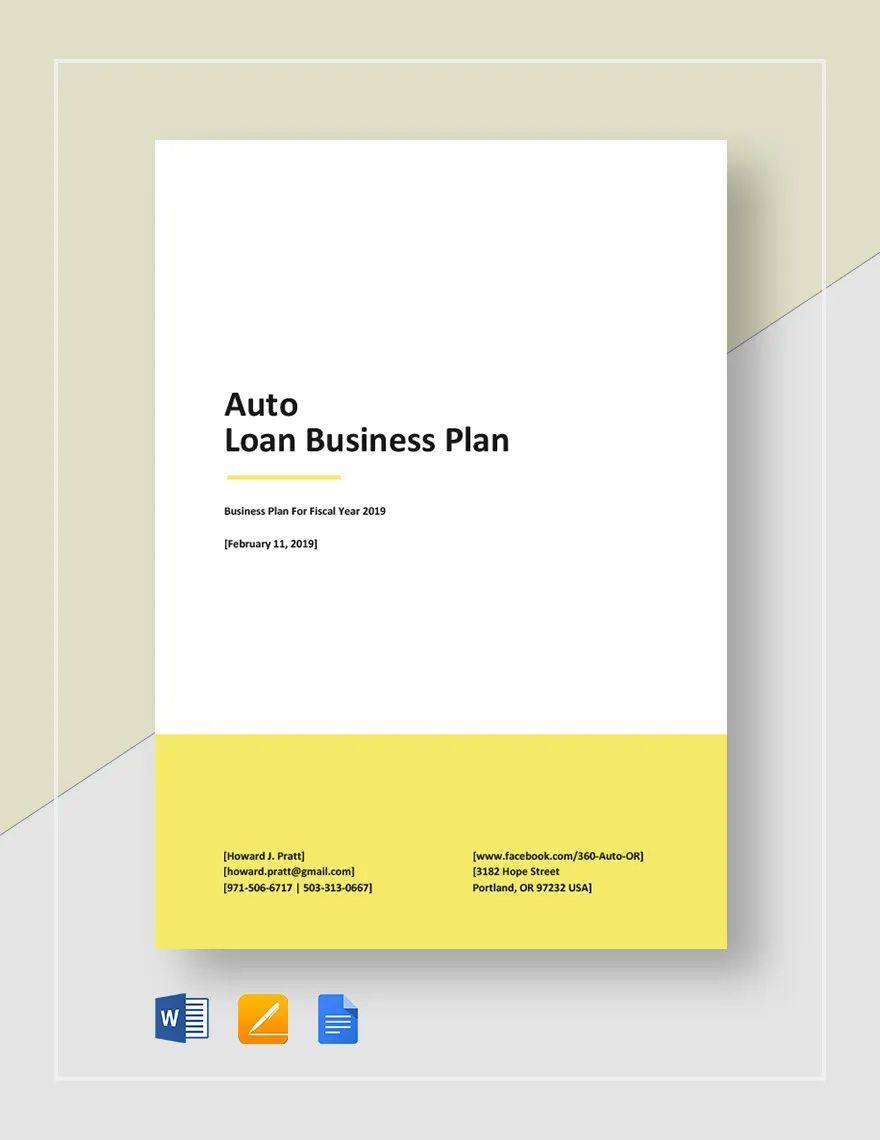
Download this Auto Loan Business Plan Template Design in Word, Google Docs, Apple Pages Format. Easily Editable, Printable, Downloadable.
When putting up your auto loan company, it’s essential to secure a business plan to manage your business successfully. If you’re running out of time to make it yourself, take a look at our Auto Loan Business Plan Template that’s available for download today. By using its suggestive content, you can save time and be more productive and efficient. Download it anytime, anywhere you go in any file format presented and onto your different devices such as your desktop computer, laptop, tablet, and cellphone. It’s quick, easy, convenient, and gets the job done. Why pass up this opportunity? Get this Auto Loan Business Plan Template now!
Already a premium member? Sign in
You may also like
How to Write an Auto Repair Shop Business Plan + Free PDF
Elon Glucklich
8 min. read
Updated February 16, 2024
Looking for a free, downloadable auto repair shop business plan Word doc or PDF to help you create a business plan of your own? Bplans has you covered.
You don’t need to find a sample business plan that exactly matches your business. Whether you’re starting an independent garage, a specialty shop for imports, or an auto body shop, the basics of the plan will be the same.
More than 280 million registered vehicles were on the road across the United States at the end of 2022. With a vast majority of them being used vehicles, the need for skilled auto repair technicians is higher than ever.
In this article, we’ll cover the basic elements of how to write an auto repair shop business plan, from your marketing plan to your financials. We also provide a sample auto repair shop business plan PDF for you to download and incorporate into your own plan.
What should you include in an auto repair shop business plan?
Are you writing a business plan for your auto shop because you’re seeking a loan ? Are you looking to clarify your path to creating a profitable, long-lasting business?
Independent auto repair shops account for three-quarters of all used car repairs in the U.S., so there are numerous examples of successful business models to guide your business.
But no two auto shops are exactly the same, so your plan will differ from others based on who you’ve identified as your target market , and what products and services you’re offering them.
Many business plans include the following sections:
- Executive summary
- Company overview and funding needs
- Market and competitive analysis
- Products and services
- Operational plan
- Business structure
- Marketing and customer acquisition strategies
- Financial planning and projections
One thing that makes an auto repair business plan different from many other service-based business plans is the sheer number of different products and services you might offer.
For instance, besides providing auto repair services, you might also sell parts, accessories, and car care products. Each might require a different promotional strategy to maximize the number of sales you make.
You may also want to think about how you’re pricing your services and if you have specific staffing requirements or training programs.
Here’s an example of an auto repair shop business plan outline.

Brought to you by
Create a professional business plan
Using ai and step-by-step instructions.
Secure funding
Validate ideas
Build a strategy
The 8 elements of an effective auto repair shop business plan
1. executive summary.
The executive summary is a high-level overview of your business plan.
It shouldn’t be more than two pages, and even though it goes at the beginning of the plan, you should write it last. That’s because the executive summary is basically a condensed version of your business plan.
Your executive summary should include a mission statement that describes the purpose of your business and what sets it apart from competitors. Maybe you can guarantee a quicker service time than other shops in your area, or you offer a unique mix of services.
Your business plan helps you focus on these key factors that will help your auto repair shop thrive, and the executive summary makes your plan more credible to anyone reading your plan.
2. Company overview and funding needs
The company overview is a short summary of your auto repair shop, including its legal structure , location, and history.
If you aren’t seeking a loan or investment for your business, you can likely skip this section.
If you are writing the business plan for funding, clearly state:
- How much you need
- What you will use it for
- How it will benefit the business
For instance, you may need funds to renovate your building, buy equipment, or place advertisements.
3. Marketing plan and competitive analysis
The marketing plan focuses on analyzing the auto repair shop market in your area, both in terms of potential customers’ needs, and how other shops in the area are (or aren’t) meeting those needs.
Researching your market involves researching local demand for auto repair services. For instance, a shop in a colder climate might have customers with different car issues than a shop in a warmer area. A shop in a lower-income market might get more customers with older vehicle models than one in a high-income market.
The market analysis should also examine your competitors , noting their strengths and weaknesses and how you can differentiate your shop.
4. Products and services
This section outlines the range of services your auto repair shop will offer. You can list them as bullet points, though you should also take some time to explain why you are offering them.
Start with your most profitable services, and work your way down. Also, separate any unique services products that differentiate your auto repair shop from competitors (you’ll need to do market research to know which services will set you apart).
A list of products and services could include:
- Engine repairs
- Transmission work
- Suspension and steering
- Brake repair
- General maintenance
- Auto part sales
You can also include specialty services like:
- Classic car restoration
- Hybrid and electric vehicle maintenance
5. Operational Plan
The operations section details the everyday functioning of the auto repair shop. It includes the shop’s operational hours, workflow management, and customer service policies.
The idea with this section is to cover the processes that you’ll deploy in your business to make sure your shop is operating efficiently, so you can maximize the number of customers you’ll serve and revenue you’ll bring in.
Be sure to touch on how you’ll manage inventory , work with parts suppliers, and ensure equipment maintenance protocols are being followed. Also, outline safety procedures and environmental compliance measures you’ll implement.
6. Business structure and management
This section describes the organizational structure and management of the auto repair shop. If you skipped the Company Summary and Funding Needs section, include information about your legal structure here.
Many owners choose to incorporate their business as Limited Liability Companies (LLCs) . This option strikes a balance between protecting the business from legal liabilities while providing flexibility in how they operate their business.
The management team section provides information about the auto repair shop’s key personnel. This includes the shop owner, managers, technicians and front office support.
Briefly explain their roles, responsibilities, qualifications, and experience.
7. Marketing and customer acquisition strategies
This section is where you’ll outline your strategies for attracting and retaining customers. You might want to offer loyalty programs for repeat customers, discounts for customers coming to your shop for the first time, or add-on services like a free car wash.
Cover the various marketing channels you’ll use, like local advertising or online marketing. Maybe you want to create a strong website and leverage social media. Or maybe you’ll rely more on partnerships with local businesses and participation in community events.
Focus on how you plan to build a strong reputation to attract and retain customers.
8. Financial planning and projections
Your financial plan should give detailed financial projections, including sales , expenses , and profitability . If you’re running an existing business, you can start with your previous year’s numbers. If you’re just starting out, put in your best guess.
Set a goal for yourself — maybe you want to grow revenue by 5 percent. Create a 12-month cash flow statement, income statement, and balance sheet that rises by 5 percent from the beginning of the year to the end.
Then, run your business.
As you compare your actuals to the forecast over time, you’ll see where you need to make strategic adjustments in order to reach your goal or if you need to revise your target.
It’s totally fine to adjust your forecast over time — forecasts are just guesses, after all.
Building a successful auto repair shop business plan: Key considerations
Understanding your target customer’s needs is crucial to writing an auto repair shop business plan that you can use effectively.
To ensure your business plan is the foundation of a growing operation, ask yourself whether you’re taking these considerations into account.
1. Service range
Vehicle owners have varied needs.
You should offer a broad spectrum of services that meet as many of the needs in your market as you can realistically provide, from basic maintenance to specialized repairs. Catering to more customer segments than your competitors is a good way to set your shop apart.
2. Pricing strategy
Competitive pricing is crucial. You want to attract customers with reasonable rates, while ensuring profitability by bringing in more revenue than expenses. Researching your competitors’ prices should help inform your pricing decisions.
3. Technician expertise
Skilled technicians are vital to your reputation and your bottom line. Make sure your technicians undergo regular training so that they’re up to date with the latest automotive trends and technologies.
Take some time to research technician wages in your area, to ensure you’re paying a competitive wage that will attract qualified employees.
4. Online presence
A strong digital footprint is essential.
Even if you plan to rely on traditional advertising and word-of-mouth sales, a website that is search engine optimized can help you generate good online reviews and attract customers in your area who are searching for auto repair services online.
If this isn’t an area of strength for you, consider hiring a website designer .
5. Shop environment
It may not make or break your business, but providing a welcoming environment at your shop signals to customers that you’re running a credible organization—a factor that might affect whether or not they return.
Focus on cleanliness, organization, and professional service.
Download your free auto repair shop sample business plan PDF
Download your free auto repair shop sample business plan PDF now, or explore Bplans’ collection of over 550 sample business plans for other options.
There are numerous reasons auto repair shop owners can benefit from writing a business plan — you’ll almost certainly need to write one if you need a bank loan.
But even if you’re not seeking funding, writing a business plan increases your chances for sustained growth .
See why 1.2 million entrepreneurs have written their business plans with LivePlan
Elon is a marketing specialist at Palo Alto Software, working with consultants, accountants, business instructors and others who use LivePlan at scale. He has a bachelor's degree in journalism and an MBA from the University of Oregon.
.png?format=auto)
Table of Contents
- What to include in your business plan
- Elements of a business plan
- Key sections
- Example and template
Related Articles

7 Min. Read
How to Write a Real Estate Investment Business Plan + Free Sample Plan PDF

9 Min. Read
Free Etsy Business Plan Template [2024 PDF + Sample Plan]

How to Write an Assisted Living Business Plan + Free Sample Plan PDF

8 Min. Read
How to Write a Home Health Care Business Plan
The Bplans Newsletter
The Bplans Weekly
Subscribe now for weekly advice and free downloadable resources to help start and grow your business.
We care about your privacy. See our privacy policy .

The quickest way to turn a business idea into a business plan
Fill-in-the-blanks and automatic financials make it easy.
No thanks, I prefer writing 40-page documents.

Discover the world’s #1 plan building software

How to Start a Car Detailing Business
T he car detailing business is a great fit for many entrepreneurs. That’s because you can start up at a level of investment that you can afford, and grow.
The car detailing business operations are changing in two main ways:
- Increasingly, the customer base is seeking a “greener” option. Many people are no longer comfortable with the amount of water needed to wash a typical vehicle, which is about 38 gallons. They want a waterless wash.
- The mobile car detailing business is increasing, with a growing demand for detailing services at a customer’s home or place of employment, instead of a physical location.
What is car detailing?
Car detailing businesses do much more than wash and wax. A car detailing company will also vacuum the interior, as well as clean and polish surfaces such as the dashboard, vents, instrument, and trim.
The work typically also includes window cleaning, inside and outside, as well as cleaning floor mats and tires.
The Auto Detailing Industry in 2023
The successful car detailing business will adapt to its customer base. In 2022, small business owners fed a $14.7 billion industry. In the US, there are about 62,000 auto detailing companies and industry leaders estimate a 4% growth.
A successful business will adapt to the increasing demand for mobile detailing performed at home or place of employment washing. Auto detailing can be among the top garage based business ideas , or you could even travel to your clients directly. Also, as people feel the pinch of challenging economic times, discretionary spending decreases. Having a vehicle detailed is classified as discretionary spending.
Why You Should Start a Car Detailing Business
Will auto detailing be a successful business for you? See if these reasons fit you as a business owner:
- You excel at customer service.
- You are good at selling, especially upselling.
- You love vehicles.
- It’s a competitive business, and there is no or little competition from other local businesses.
- You would take pride in the results of Before and After.
- You can handle physical labor.
You’ll need a car detailing business plan that includes how you’ll start, how you’ll cover startup costs, and whether you’ll run a mobile business or business with a physical location – or a mix of both.
1. Get Training and Experience
There are training institutions that you can attend to get a car detailing license and/or auto detailing certification. You can find these centers via the international detailing association. Or, you can opt for on-the-job training. If you choose to buy a car wash franchise , training will be provided.
2. Do Your Research
Do market research. Will your potential customers prefer mobile detailing businesses? If you opt for brick-and-mortar, is your location convenient for people who will drop off their own car? In other words, who is your target market?
3. Create a Business Plan
Every new business should have a business plan. Don’t let this project daunt you. You’ll need a mission statement, which describes the goals of your company. An executive summary will describe your business model, which is how you’ll operate.
Another part of your plan is a description of your business finances – how you plan to fund your start and how you plan to grow. Do you have or do you plan to add business partners?
You’ll need a business plan as part of your submission package if you seek financing, along with documents regarding your business bank accounts.
4. Fund Your Business
Don’t overextend, remember you can start with very little investment capital instead of getting a start with a business loan. Many entrepreneurs start a car detailing venture by working part-time, after their regular jobs, with a garage-based business.
If your personal finances are top notch you may be able to obtain a small business funding loan. You can also establish credit accounts with vendors who supply cleaning products.
5. Gather Your Tools
There is basic equipment you’ll need as part of your start-up costs, whether you’re washing with water or waterless, at a fixed location or mobile detailing setup. Supplying, and resupplying, should be part of your thorough business plan as an ongoing expense. However, auto detailing is among the top low tech business ideas , so you shouldn’t need many expenses devices.
If you’re using water, you’ll need a pressure washer. If not, you’ll need a waterless wash product.
You’ll need a buffer, microfiber towels, buckets, sponges and assorted products such as leather cleaner. You’ll need detailing brushes of various sizes, metal polish and tire cleaner.
6. Keep It Legal
Most small businesses need to obtain business insurance and a local business operating license. To get your business licensed legally, you may have to do so at both the state and local government authority levels. If you’re not confident about doing this, hire a business attorney.
Choose your business structure, which will most likely be a limited liability company or LLC to protect your personal assets from your business entity.
Since you’ll be paying the federal business tax you’ll need a federal business tax id. You’ll also need to collect sales tax. As with many new business ventures, you should consult a tax professional to make sure you don’t make mistakes with your taxes.
You’ll need general liability business insurance and commercial vehicle insurance if you’re operating a mobile business.
7. Open a Business Bank Account
When you open your business bank account you should also get a business credit card, which you can link to the account. It’s just a good idea to keep your business accounts separate from your personal accounts, even if you’re working part-time.
8. Manage Your Finances
Most new business ventures need the services of a professional accountant, especially at start up.
9. Hire a Team
Most businesses in auto detailing start with a sole proprietor, and hire employees as needed to support growth in new customers. When you hire you’ll need to add worker’s compensation insurance.
10. Market Your Services
You’ll need a website and a social media presence. Part of your thought-out marketing strategy should include reaching out to current and past customers, possibly adding special enticement to keep or restore their business. You can offer senior discounts. Try for contracts, such as car rental companies or car dealers.
11. Open Your Business
Schedule your grand opening and make announcements with local media, as well as on your website and social media accounts.
More Tips for Starting a Successful Auto Detailing Business
Launching a successful business takes a continual hustle to grow. Read these 10 tips for starting and growing a business , then check out a few tips specific to auto detailers below:
- Join your local Chamber of Commerce, where you can network with other business owners.
- Strive to create partnerships, which is a foundation for a modern business. For example, local vehicle repair shops can give customers your business card.
- Further your education by learning how to protect vehicle finishes with specialized services such as graphene or ceramic coating.
- Offer more than vehicle detailing – add boats, motorcycles, and RVs.
What materials do you need to start a car detailing business?
You’ll need soap or foam wash, wax, microfiber towels, car buffer tools, detailing brushes, metal polish and tire cleaner.
How much does it cost to start a mobile detailing business?
The needed materials don’t change much whether you’re at a set location or operating mobile. At a basic level, it will cost at least $10,000 to stock the materials. Before you work with someone’s vehicle, you need a minimum business liability insurance and your business should be registered.
If you’re going to make money with your car – such as traveling to mobile appointments or picking up and delivering a customer’s vehicle – you’ll need commercial vehicle insurance. You should be able to find an umbrella policy, called a Business Owners Policy or BOP, to cover your needed insurance.
Is starting a car detailing business difficult?
As small business ideas go, this is a winner. Although competition can be strong, startup costs can be low at the entry-level.
The hardest part of starting a car detailing business may be the decision on whether to operate from a permanent location or go mobile. You can opt for a mix – by picking up and delivering customer vehicles to your permanent location.
Is a car detailing business profitable?
Having a vehicle detailed is viewed as “discretionary” spending. In other words, when economic times are challenging, your customers may opt to stop paying to have their vehicles professionally cleaned.
Still, your material cost is low and the profit market is good. The cost for a minimal cleaning, such as washing and waxing, doing windows, vacuum the interior, ranges from about $65 for small vehicles and up to $160 for larger vehicles.
According to industry leaders, more than 2/3s of customers are concerned about sustainability. Help your vehicle detailing business to be the top choice by opting for green solutions.
Someone starting the car detailing business on a part-time basis can expect to earn about $100 per vehicle. Full-scale sole proprietor car detailing business owners can expect to earn from $30,000 to $60,000 as a start up. Of course, that depends on whether or not a mobile vehicle or permanent location is already owned, or must be leased.
Image: Envato Elements

Biden’s latest plan for student loan cancellation moves forward as a proposed regulation
WASHINGTON (AP) — President Joe Biden’s latest plan for student loan cancellation is moving forward as a proposed regulation, offering him a fresh chance to deliver on a campaign promise and energize young voters ahead of the November election.
The Education Department on Tuesday filed paperwork for a new regulation that would deliver the cancellation that Biden announced last week . It still has to go through a 30-day public comment period and another review before it can be finalized.
It’s a more targeted proposal than the one the U.S. Supreme Court struck down last year. The new plan uses a different legal basis and seeks to cancel or reduce loans for more than 25 million Americans.
Conservative opponents, who see it as an unfair burden for taxpayers who didn’t attend college, have threatened to challenge it in court.
The Democratic president highlighted the the plan during a trip to Wisconsin last week, saying it would provide “life-changing” relief. He laid out five categories of people who would be eligible for help.
The new paperwork filed by the Education Department includes four of those categories, while a separate proposal will be filed later addressing how people facing various kinds of hardship can get relief.
The broadest forgiveness category would help borrowers who owe more than they originally borrowed because of runaway interest. It would eliminate up to $20,000 in interest for anyone in that situation, while those with annual incomes below $120,000 and enrolled in income-driven repayment plans would get all their interest erased with no maximum limit. It would be done automatically.
Another category would cancel loans for people who have been paying back their undergraduate student loans for at least 20 years, and those who have been paying graduate loans at last 25 years.
It would automatically cancel loans for those who went to colleges or programs considered to have low financial value. Borrowers would be eligible for cancellation if they attended a program that leave graduates with earnings no better than those with a high school diploma, for example, or programs that leave graduates with large shares of debt compared with their incomes.
Borrowers who are eligible for other federal forgiveness programs but haven’t applied would also get loans erased. Federal education officials would use existing data to identify those people and offer relief. It’s intended to reach those who don’t know about other programs or have been deterred by complicated application processes .
The proposal was hashed out over the course of several hearings as part of a federal rules process that gathers advice from outside experts. The plan was drafted with the help of students, college officials, state officials, borrower advocates and loan servicers.
During that process, advocates pushed for a fifth category of forgiveness for people who have different kinds of hardship that prevent them from being able to repay their loans. The Education Department said it’s still working on the details of that rule, with a separate proposal to come “in the coming months.”
The department said the hardship proposal will offer cancellation to borrowers who are at high risk of defaulting on their loans along with those who face other hardships, including high medical and caregiving expenses. That proposal will mirror one agreed upon by outside experts during the rulemaking process, the agency said.
It usually takes months for a proposed rule to be finalized, and months more before it can take effect. The Biden administration said it plans to start implementing some parts of the new proposal as soon as this fall, using the education secretary’s authority to implement rules early in certain cases.
Republicans are staunchly opposed to any broad student loan cancellation, saying it’s an unfair bailout for people who went to college.
“Where is the relief for the guy who didn’t go to college but is working to pay off the loan on the truck he takes to work?” said Sen. Bill Cassidy, R-La., the ranking member of the Senate Health, Education, Labor and Pensions Committee. “What about the woman who paid off her student loans but is now struggling to afford her mortgage? Instead the Biden administration is sticking these Americans with the bill of someone else’s student debt.
Two coalitions of Republican states have sued the Biden administration to block a separate repayment plan that offers an accelerated path to loan forgiveness.
The White House says it’s confident the new plan is on solid legal ground, saying the Higher Education Act gives the education secretary the power to waive student loans in certain cases.
The Associated Press’ education coverage receives financial support from multiple private foundations. The AP is solely responsible for all content. Find the AP’s standards for working with philanthropies, a list of supporters and funded coverage areas at AP.org .
Copyright 2024 The Associated Press. All rights reserved.

Pedestrian struck, killed by train in Lexington

AT&T phone service issues reported across Kentucky

Two people robbed outside Lexington restaurant

10-year-old boy confesses to killing a man in 2022

Loved ones honor fallen Central Kentucky police sergeant
Latest news.

MadisonHome launches new program to help unhoused community find jobs, permanent housing

Woman accused of calling her friends after she killed her ex-husband, police say

Officer who won Rookie of the Year award dies in car crash

Propane tank explodes at Georgetown business

Fire breaks out in Laurel County
Confirmed Euro Zone Inflation Fall Bolsters ECB's June Rate Cut Plan
Confirmed Euro Zone Inflation Fall Bolsters ECB's June Rate Cut Plan

FILE PHOTO: A shopper pays with a twenty Euro banknote at a local market in Nantes, France, February 1, 2024. REUTERS/Stephane Mahe/File Photo
FRANKFURT (Reuters) - Euro zone inflation slowed across the board last month, reinforcing expectations for a European Central Bank interest rate cut in June, even as rising energy costs and a weak euro cloud the outlook, final data from Eurostat showed on Wednesday.
Inflation in the 20 nations sharing the euro currency slowed to 2.4% last month from 2.6% in February, in line with a preliminary estimate released earlier this month.
Meanwhile underlying price growth, which filters out volatile food and energy prices dipped to 2.9% from 3.1%, despite services inflation holding steady at an uncomfortably high 4.0%.
Inflation has fallen quickly over the past year, opening the way for interest rate cuts starting in June, even if the next few months are likely to bring choppy price growth data and a drawn-out return to the 2% target.
The euro zone is facing opposing inflationary forces, which could keep the headline rate fluctuating around current levels over the coming months before dipping towards 2% in the autumn.
Factors pulling inflation down include the continued slowdown in wage growth, anaemic demand given a near recessionary environment, tightening fiscal policy, cheap imports from China and relatively low gas prices after a mild winter.
But rising oil prices and a weaker euro both put upward pressure on prices while stubborn services costs raise the risk of underlying price growth getting stuck above target.
"The recent rise in commodity and energy prices will add to headline (inflation) in the coming months, with euro/dollar weakness sponsored by Fed-ECB policy divergence compounding the move," TS Lombard said in a note.
"The euro area remains among the largest energy importers worldwide, with great sensitivity to energy prices."
The euro has weakened around 4% against the dollar since the start of the year and the movement has been exacerbated by expectation for slower rate cuts by the U.S. Federal Reserve given sticky inflation.
But this is mostly a move in the dollar, not the euro, economists says, and the trade weighted euro has weakened much less, muting the impact of exchange rate movements.
"For the time being, the weaker euro doesn't look like the biggest concern for the ECB," ING said in a note. "It is rather the surge in oil prices and a potentially further escalation of the conflicts in the Middle East that will give at least the ECB hawks some headaches."
Policymakers have so far said that the oil price and exchange rate moves are too small to fundamentally alter the inflation outlook but market expectations for ECB rate cuts continue to retreat.
Investors now see only 75 basis points of rate cuts this year, or two moves after June, a retreat compared to two months ago when between 4 and 5 cuts were seen.
Energy has been a big drag on inflation all year as high year earlier figures get knocked from base figures but this trend could reverse in the second half of the year, if oil keeps going up.
Some argue, however, that the traditional link between oil and gas prices has been broken so an oil price rise does not automatically lift natural gas prices and does not have the same upward impact on inflation as in the past.
(Reporting by Balazs Koranyi; Editing by Ros Russell)
Copyright 2024 Thomson Reuters .
Tags: European Union
The Best Financial Tools for You
Credit Cards

Personal Loans

Comparative assessments and other editorial opinions are those of U.S. News and have not been previously reviewed, approved or endorsed by any other entities, such as banks, credit card issuers or travel companies. The content on this page is accurate as of the posting date; however, some of our partner offers may have expired.

Subscribe to our daily newsletter to get investing advice, rankings and stock market news.
See a newsletter example .
You May Also Like
8 best defense stocks to buy now.
Wayne Duggan April 22, 2024

7 Best Energy ETFs to Buy Now
Tony Dong April 22, 2024

Small-Cap ETFs to Buy for Growth
Glenn Fydenkevez April 22, 2024

Oil Stocks Tied to Crude Prices
Wayne Duggan April 19, 2024

7 Best Dividend ETFs to Buy Now
Jeff Reeves April 19, 2024

Could Energy Costs Suppress Bitcoin?
Dmytro Spilka April 19, 2024

Best Tech ETFs to Buy
Coryanne Hicks April 19, 2024

15 Best Dividend Stocks to Buy for 2024
Ian Bezek April 19, 2024

Commodity Stocks to Buy for Dividends
Matt Whittaker April 18, 2024

ETF vs. Index Funds: What to Know
Tony Dong April 18, 2024

Best Actively Managed ETFs
Glenn Fydenkevez April 18, 2024

8 Top Nancy Pelosi Stocks to Buy
Wayne Duggan April 18, 2024

7 Best Manufacturing Stocks to Buy Now
Jeff Reeves April 17, 2024

What's a Self-Directed IRA?
Kate Stalter April 17, 2024

5 Cloud ETFs to Buy Now
Coryanne Hicks April 17, 2024

8 Best Stocks to Buy Now With $1,000
Wayne Duggan April 16, 2024

Mutual Funds vs. Stocks
Marc Guberti April 16, 2024

7 Best Semiconductor ETFs to Buy in 2024
Tony Dong April 16, 2024

7 Best Funds to Hold in a Roth IRA

Money Market Funds to Buy for Safety
Tony Dong April 15, 2024


IMAGES
VIDEO
COMMENTS
Writing a business plan for an auto loan business may seem like a daunting task, but with our nine-step checklist, you'll be well-equipped to create a comprehensive plan that sets you up for success. So, get ready to enter the thriving auto loan market and make a positive impact on individuals seeking reliable transportation with a manageable ...
Character. A lender will assess your character by reviewing your education, business experience and credit history. This assessment may also be extended to board members and your management team ...
A business plan is a document that lays out a company's strategy and, in some cases, how a business owner plans to use loan funds, investments and capital. ... Auto Loans . Auto Loan Rates ...
Let's dive into the key elements of an effective auto finance business plan, the meaning of auto-financing, and the success u could have through an auto finance business loan. Meaning of Auto Financing Business. Auto financing refers to the process of obtaining a loan to purchase a vehicle, typically a car, truck, or motorcycle.
A business auto loan is a secured loan. It can finance purchasing a new or used vehicle for business purposes. Banks, credit unions and online lenders offer these loans. The cost of borrowing ...
The Auto Loan Business Plan startup aims to be recognized as the go-to provider for auto loans in the region, delivering exceptional service and competitive interest rates. Retirement Strategy. As for the retirement strategy, the CEO John Smith envisions stepping away from the company in the year 2040, which is 17 years after the startup's ...
5. Obtain necessary permits and licenses. Research and apply for the required permits and licenses to legally operate your business. 2-4 weeks. $500-$1,500. 6. Build a mobile app and online platform. Hire a development team or utilize resources to create a user-friendly mobile app and online platform. 3-6 months.
Here's how to kick-start a car finance company into hyperspeed. At HES, we have over 10 years of experience in developing solutions for the automotive industry. So, whether you're a dedicated car loan company, a startup, or a lending business branching out into a new avenue, the first step we recommend is getting in touch with our dedicated ...
PNC: Best for business-use passenger vehicles. Ally Bank: Best for business auto loans with no personal guarantee. Wells Fargo: Best for large commercial and specialty vehicles, and seasonal ...
Loan terms up to 84 months on commercial vehicle and equipment loans. Truist is one of the largest commercial banks in the U.S., and its business auto loans, commercial vehicle and equipment loans come with a $250,000 maximum loan amount. Depending on the type of loan you have, your term will be between 75 and 84 months.
A Sample Auto Finance Business Plan Template. 1. Industry Overview. According to reports, the world automotive finance market size was valued at USD 220.18 billion in 2019 and is projected to show a CAGR of 6.7 percent increase from 2022 to 2026.
Describe Your Services or Products. The business plan should have a section that explains the services or products that you're offering. This is the part where you can also describe how they fit ...
How to Open a Car Dealership in 10 Steps: Complete Guide. 1. Executive Summary. The executive summary of a business plan gives a sneak peek of the information about your business plan to lenders and/or investors. If the information you provide here is not concise, informative, and scannable, potential lenders and investors may lose interest.
6. CIT. Best for: Fast funding and affordable starting rates from an online lender. Finally, last on our list of the best business auto loan options is CIT, formerly Direct Capital. CIT is another online lender that offers a host of financing options, including vehicle and equipment financing.
The Auto Loan Company Business Plan and Business Development toolkit features 18 different documents that you can use for capital raising or general business planning purposes. Our product line also features comprehensive information regarding to how to start an Auto Loan Company business. All business planning packages come with easy-to-use ...
Business auto loans from banks and credit unions range from $10,000 up to $250,000 with terms up to six years. These loans can be used for cars, vans or trucks, and banks often require the ...
To launch a car title loan company, follow these key steps: Choose a business entity and establish licensing. Understand your state's car title loan laws and regulations. Obtain required lending licenses and bonding. Find affordable office space, ideally with parking.
Car Dealership Business Plan. Over the past 20+ years, we have helped over 4,000 entrepreneurs create business plans to start and grow their car dealerships. On this page, we will first give you some background information with regards to the importance of business planning. We will then go through a car dealership business plan template step ...
Preferred Rewards for Business members who apply for a Business Advantage Auto Loan purchase or refinance loan receive an interest rate discount of 0.25% for Gold tier, 0.35% for Platinum tier and 0.50% for Platinum Honors tier based on applicant's or a co-applicant's Preferred Rewards for Business program tier at the time of loan application.
The Auto Loan Business Plan startup was founded in the year 2021 with the aim of providing financing to individuals seeking to purchase a personal vehicle. The company was established in Los Angeles, California, where the need for personal vehicles is high due to the city's sprawling nature and limited public transportation.
Get this Auto Loan Business Plan Template now! Instantly Download Auto Loan Business Plan Template, Sample & Example in Microsoft Word (DOC), Google Docs, PDF, Apple Pages Format. Available in A4 & US Letter Sizes. Quickly Customize. Easily Editable & Printable.
A car title loan business is a type of financial service that allows individuals to borrow money by using their vehicle's title as collateral.. These loans are typically short-term and are intended to provide quick access to cash for people who may not qualify for traditional loans due to poor credit or other financial challenges.
3. Marketing plan and competitive analysis. The marketing plan focuses on analyzing the auto repair shop market in your area, both in terms of potential customers' needs, and how other shops in the area are (or aren't) meeting those needs. Researching your market involves researching local demand for auto repair services.
Your business may need vehicles, plant machinery or other equipment. You can often choose whether to lease these items or buy them. Leasing means you rent the vehicles or equipment from a leasing company that owns them. Buying means you pay for and own your vehicles or equipment outright. You can apply for a loan if you don't have enough cash ...
Best semi truck financing options: Bank of America, National Funding, Triton Capital, JR Capital, CAG Truck Capital, U.S. Bank, Wells Fargo
Help your vehicle detailing business to be the top choice by opting for green solutions. Someone starting the car detailing business on a part-time basis can expect to earn about $100 per vehicle ...
We'll start your Friday right by explaining the news, rounding up the best stories we read this week and even sharing a cocktail recipe or two. Remedial student debt forgiveness: President Joe ...
The Biden administration is canceling student loans for another 206,000 borrowers as part of a new repayment plan. (CNN, POOL, WSVN) WASHINGTON (AP) — President Joe Biden's latest plan for ...
Inflation in the 20 nations sharing the euro currency slowed to 2.4% last month from 2.6% in February, in line with a preliminary estimate released earlier this month.
Islamic finance has key principles: earning or charging interest ( riba) is prohibited. uncertainty ( gharar) and gambling or speculation ( maysair) must be limited as far as possible. investments ...